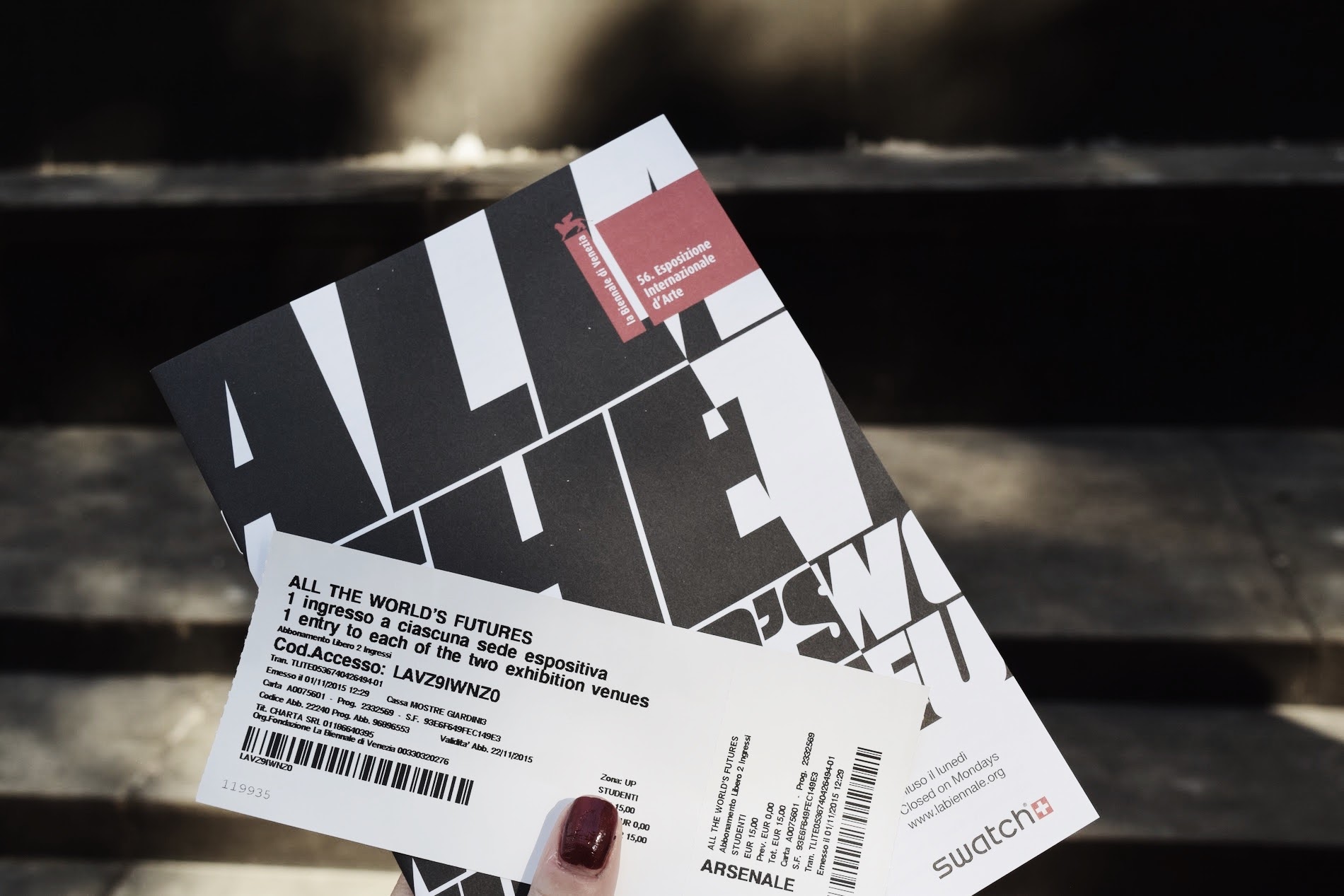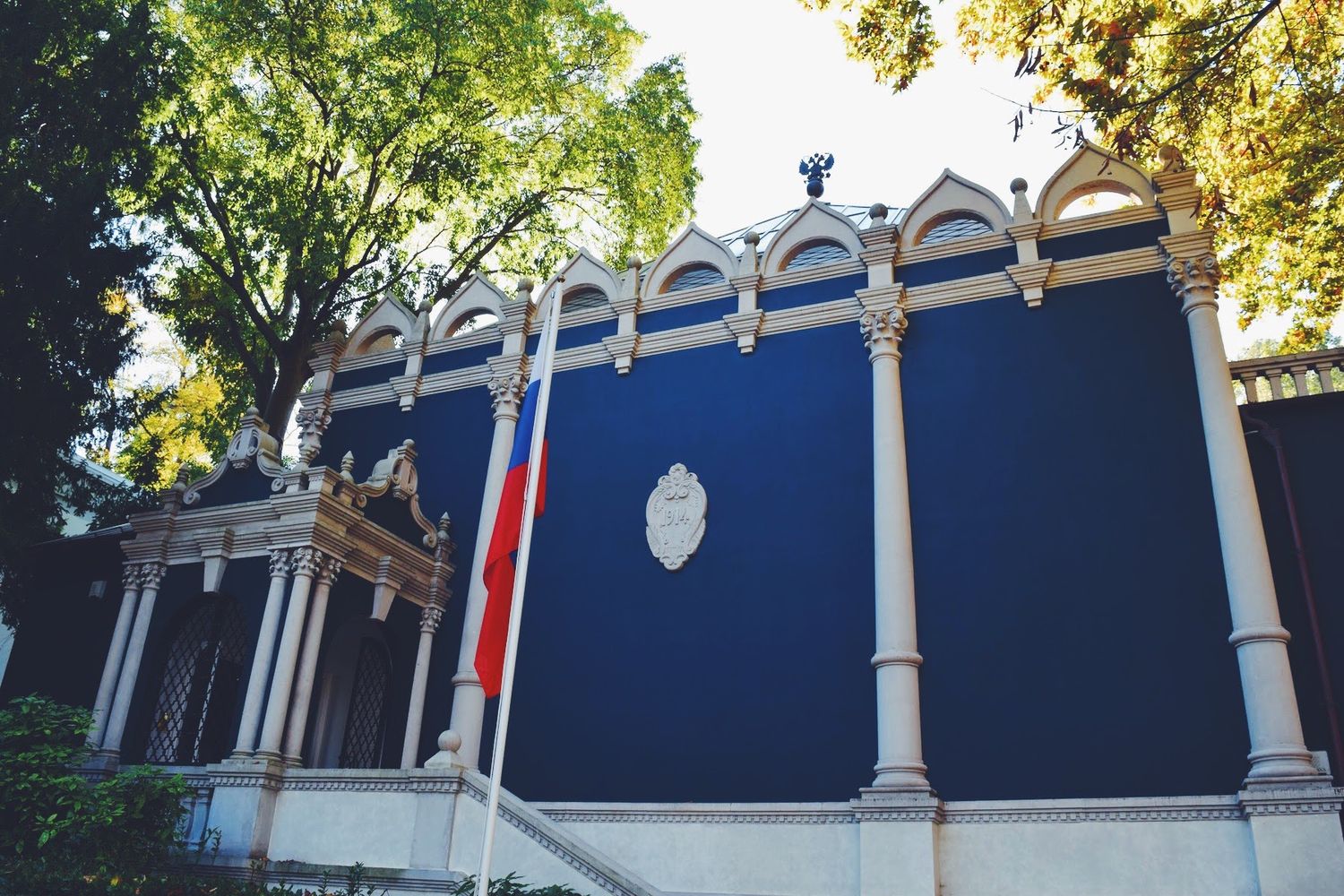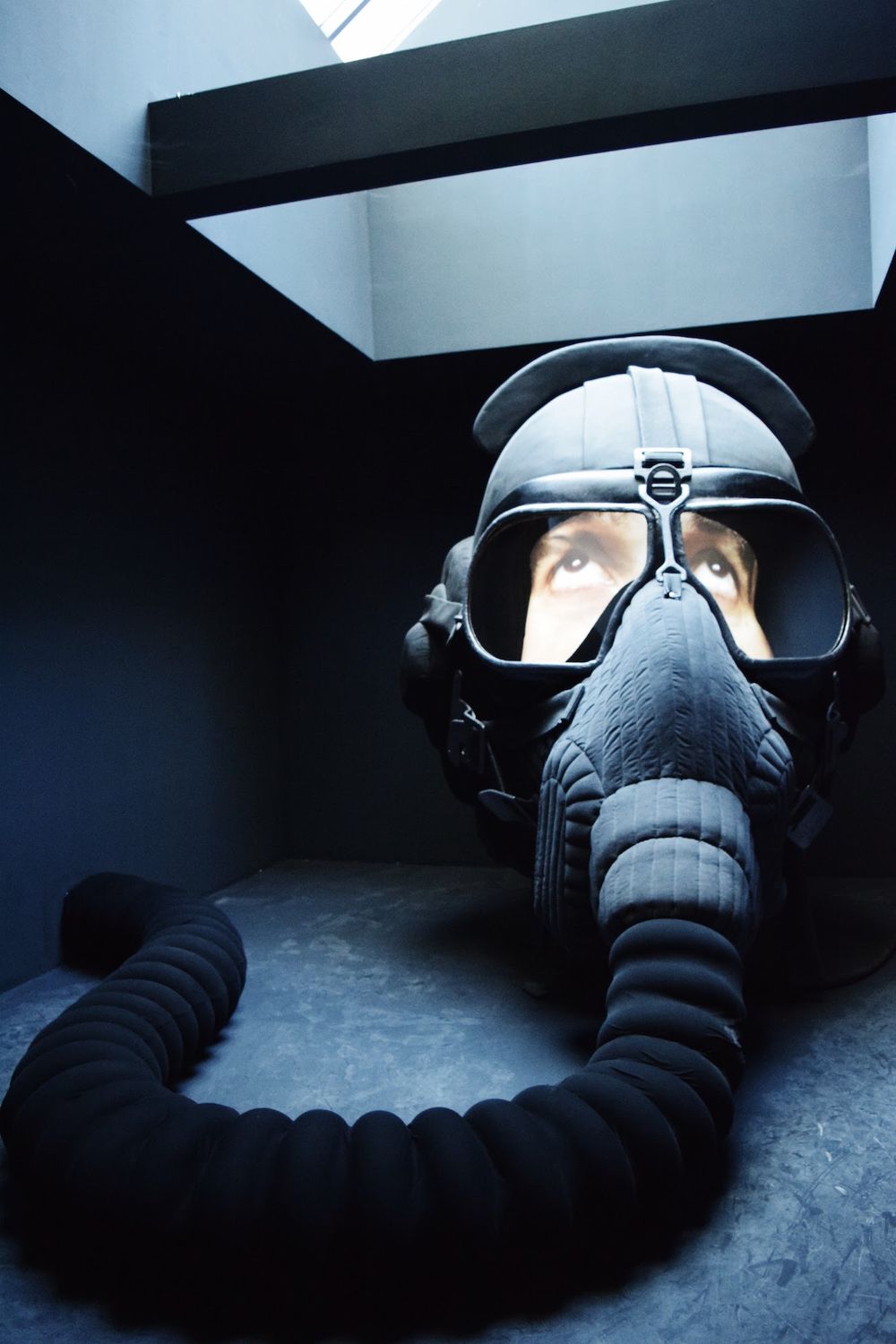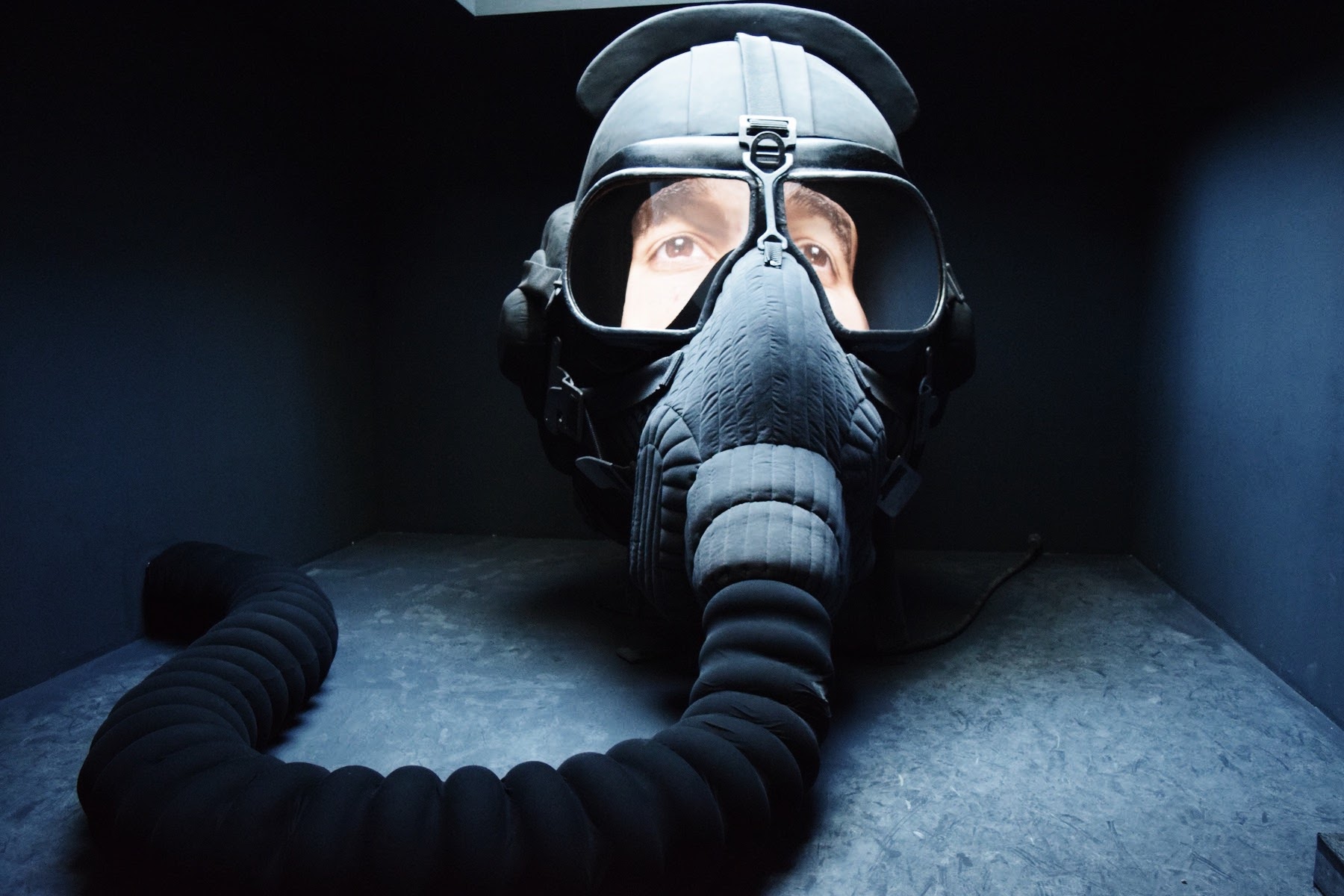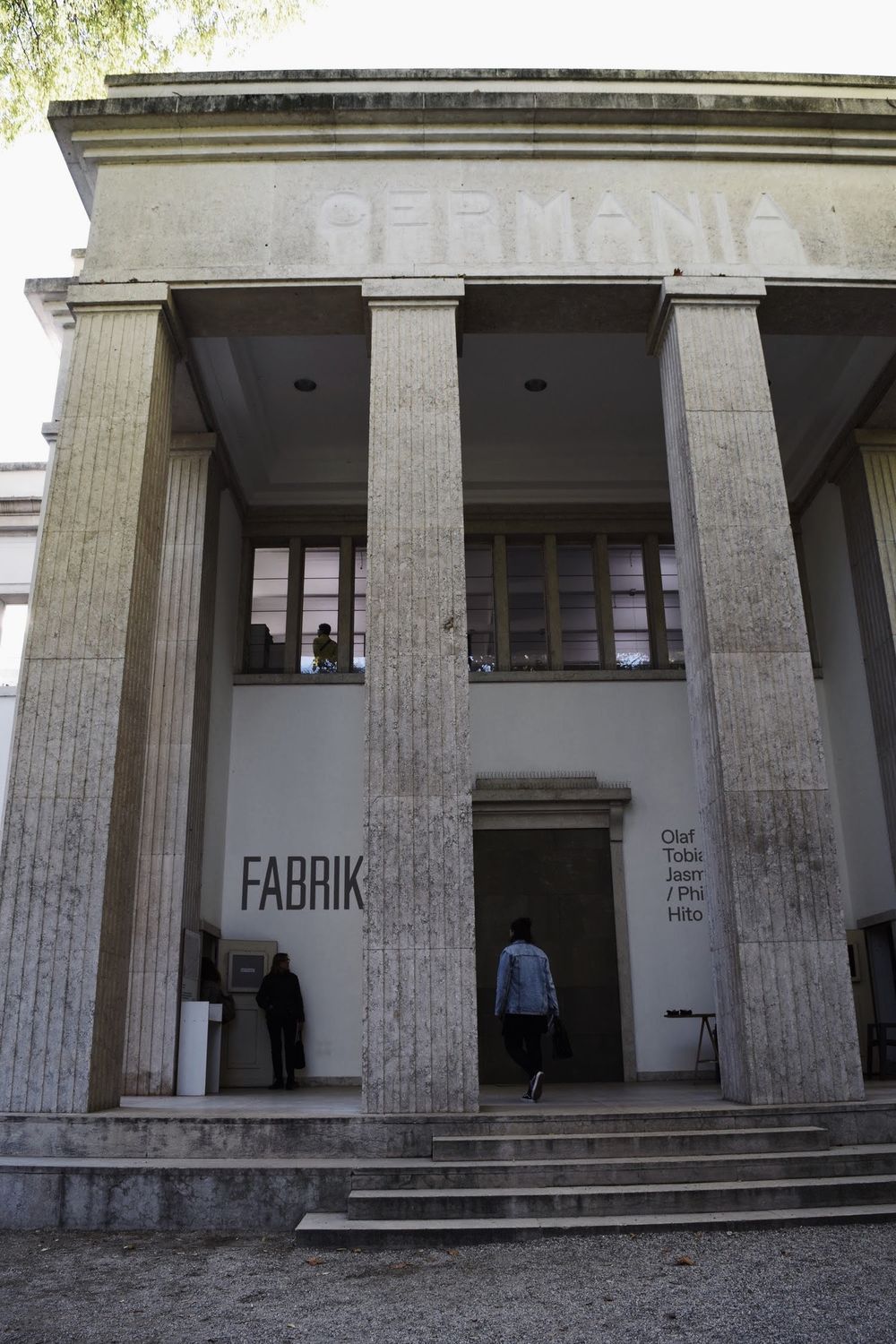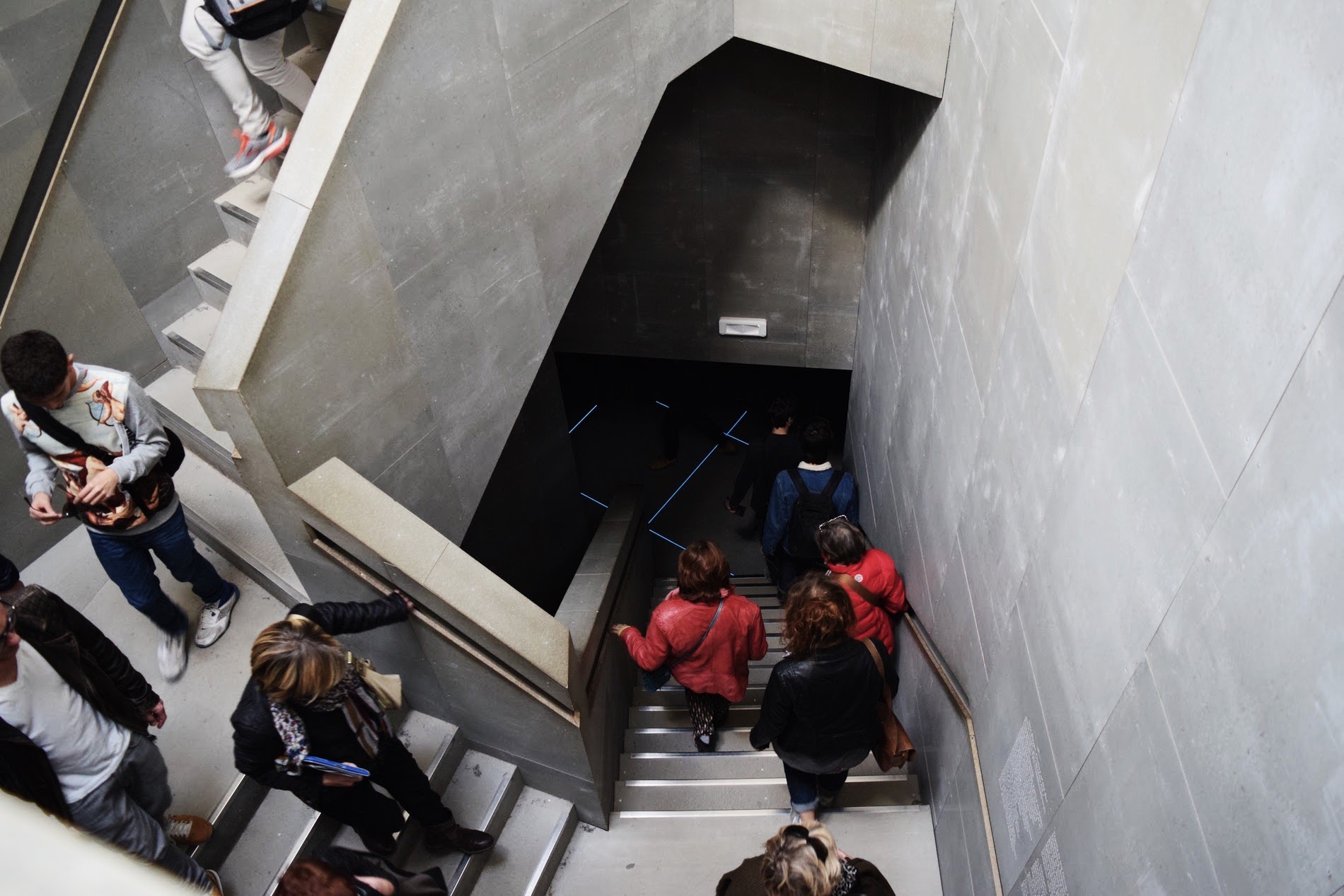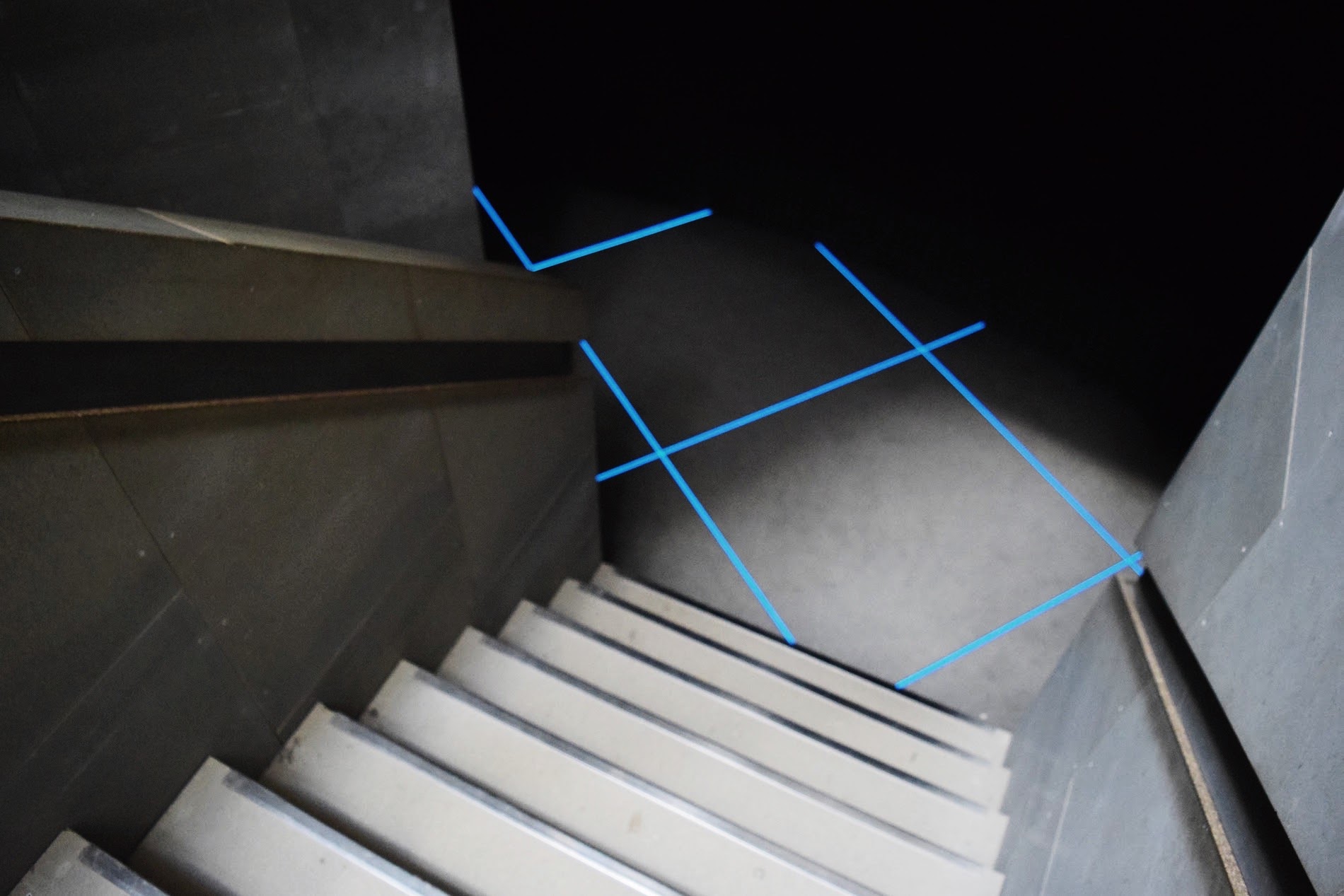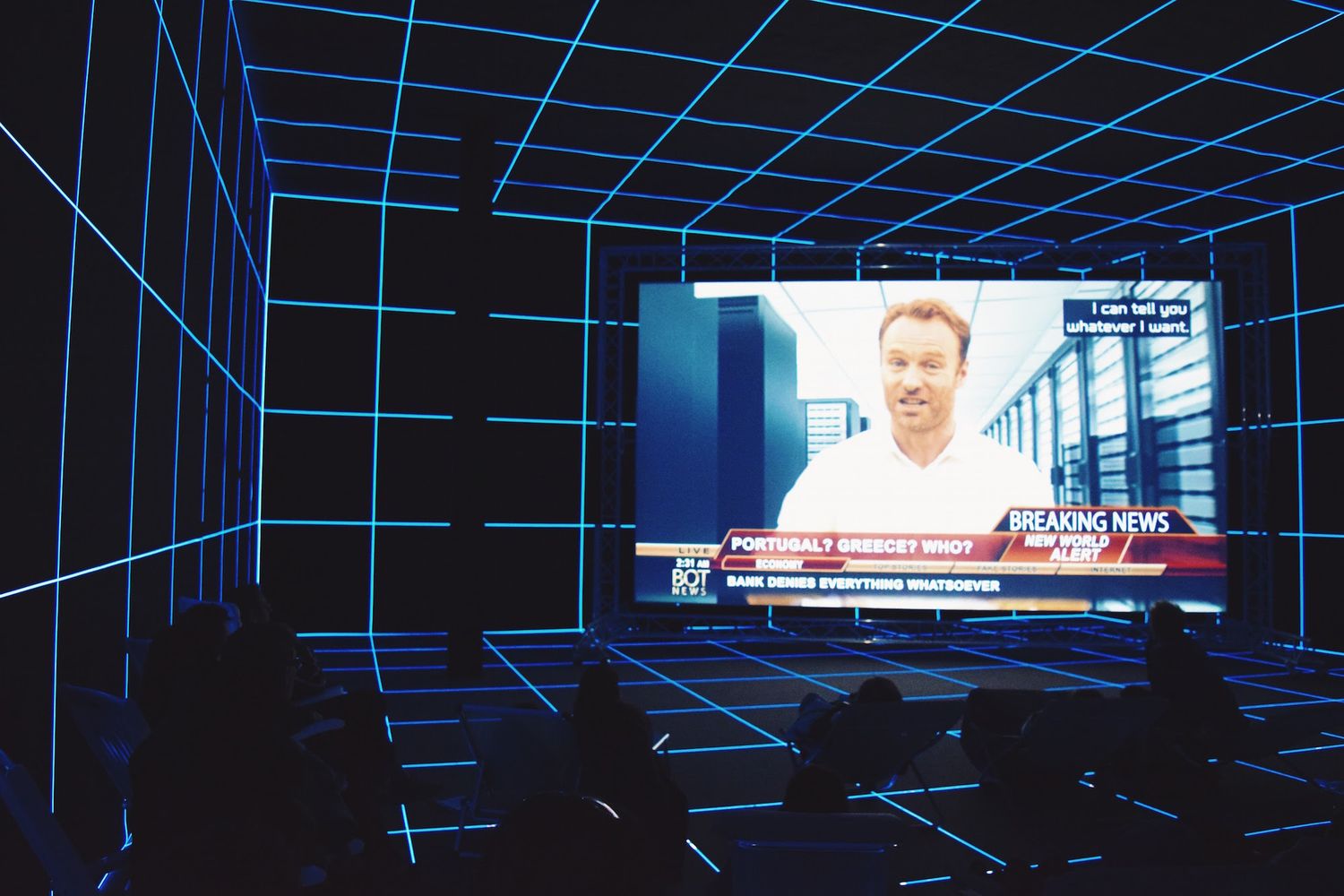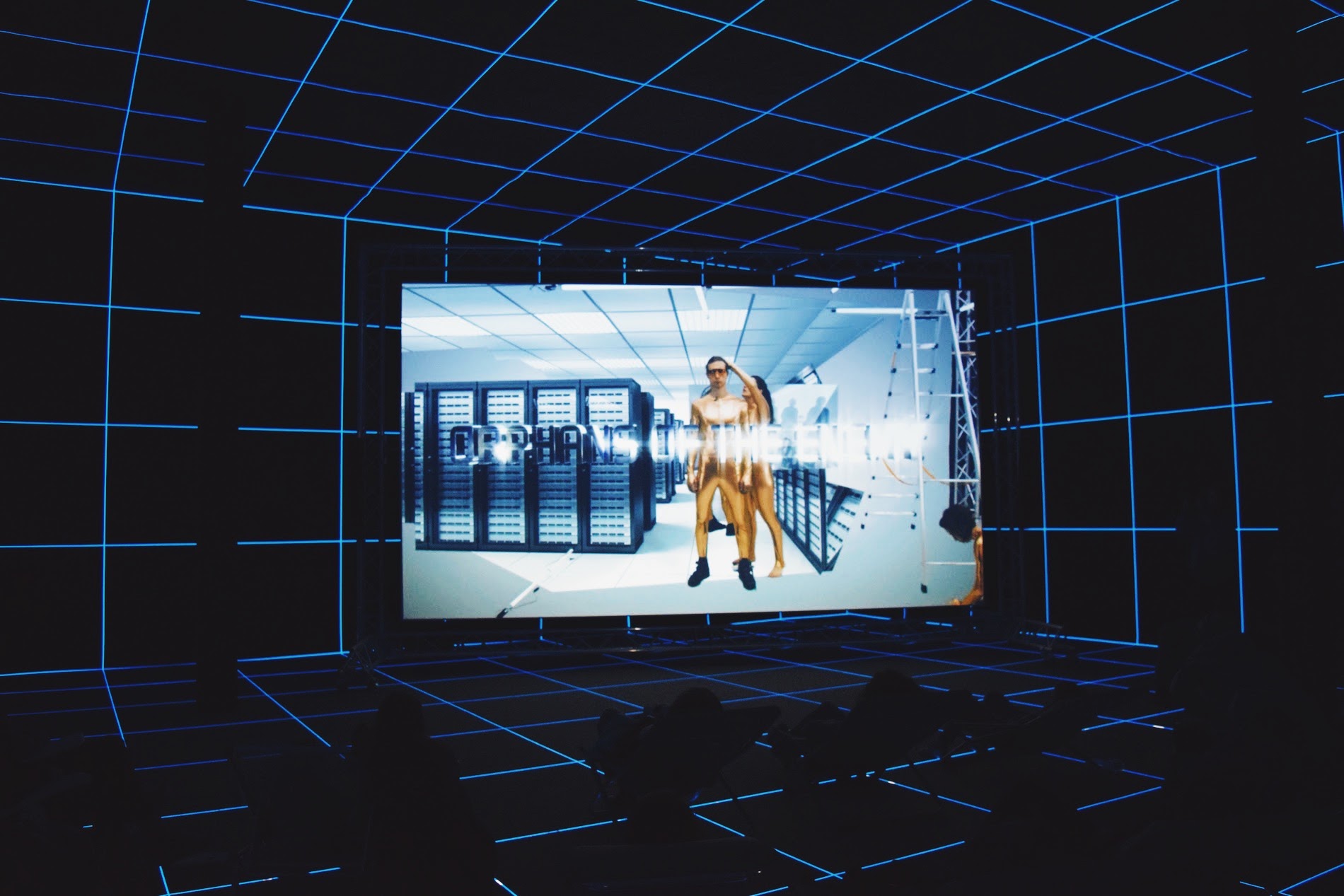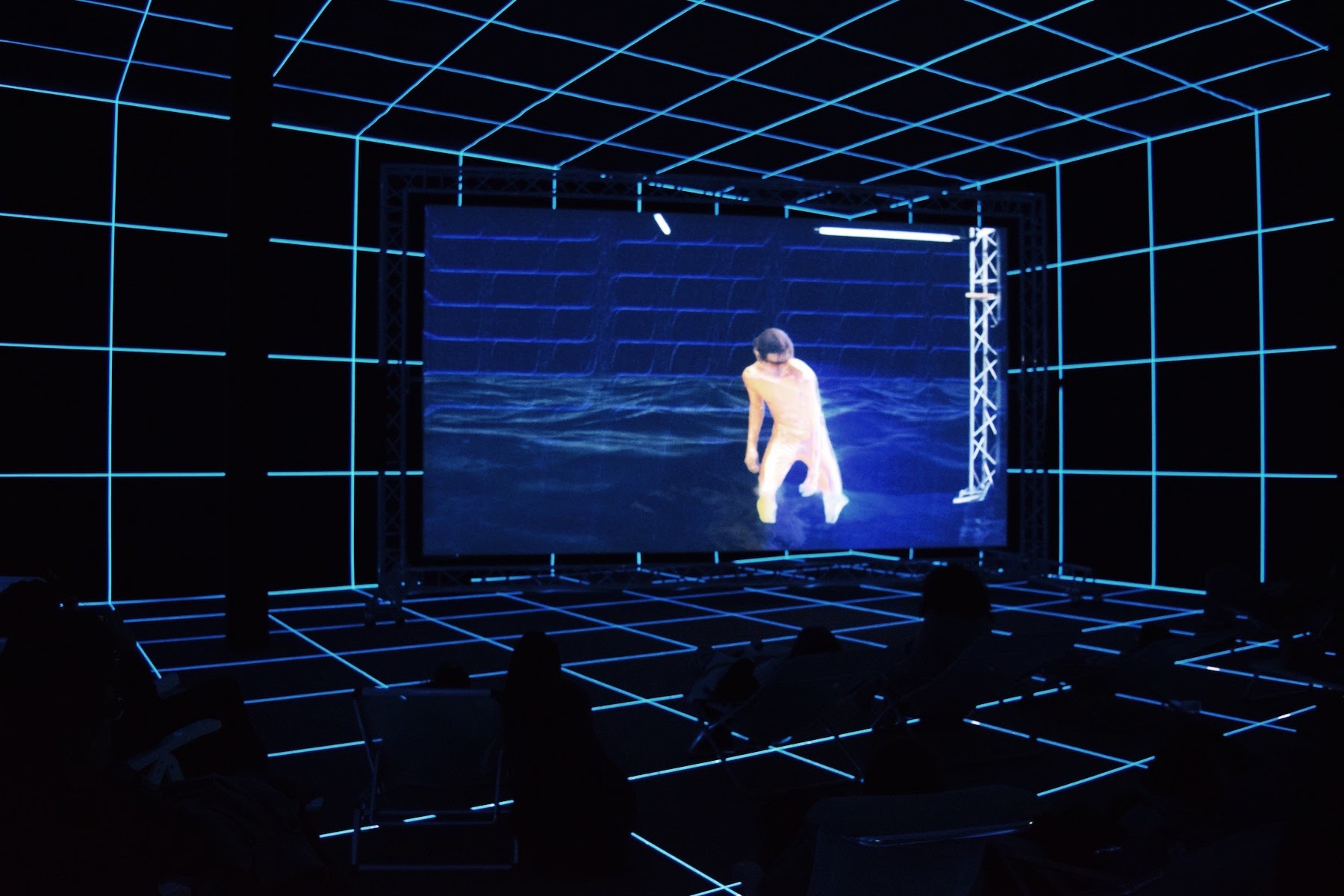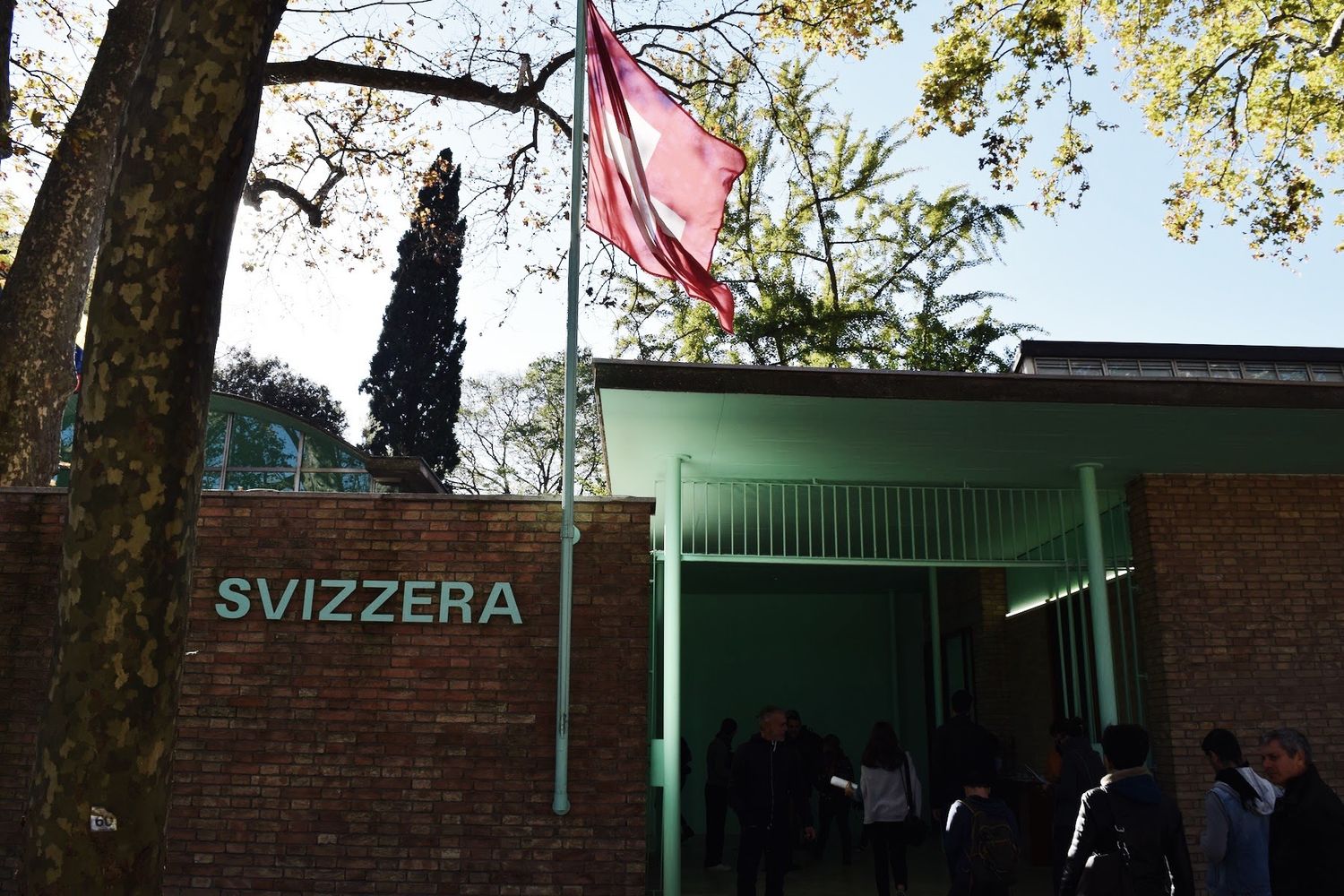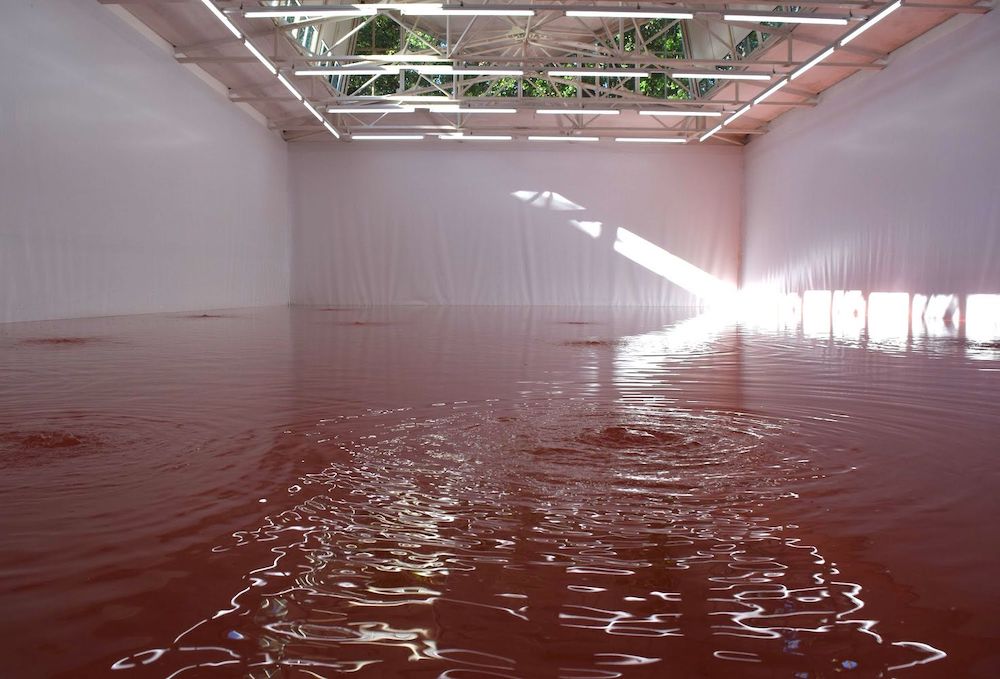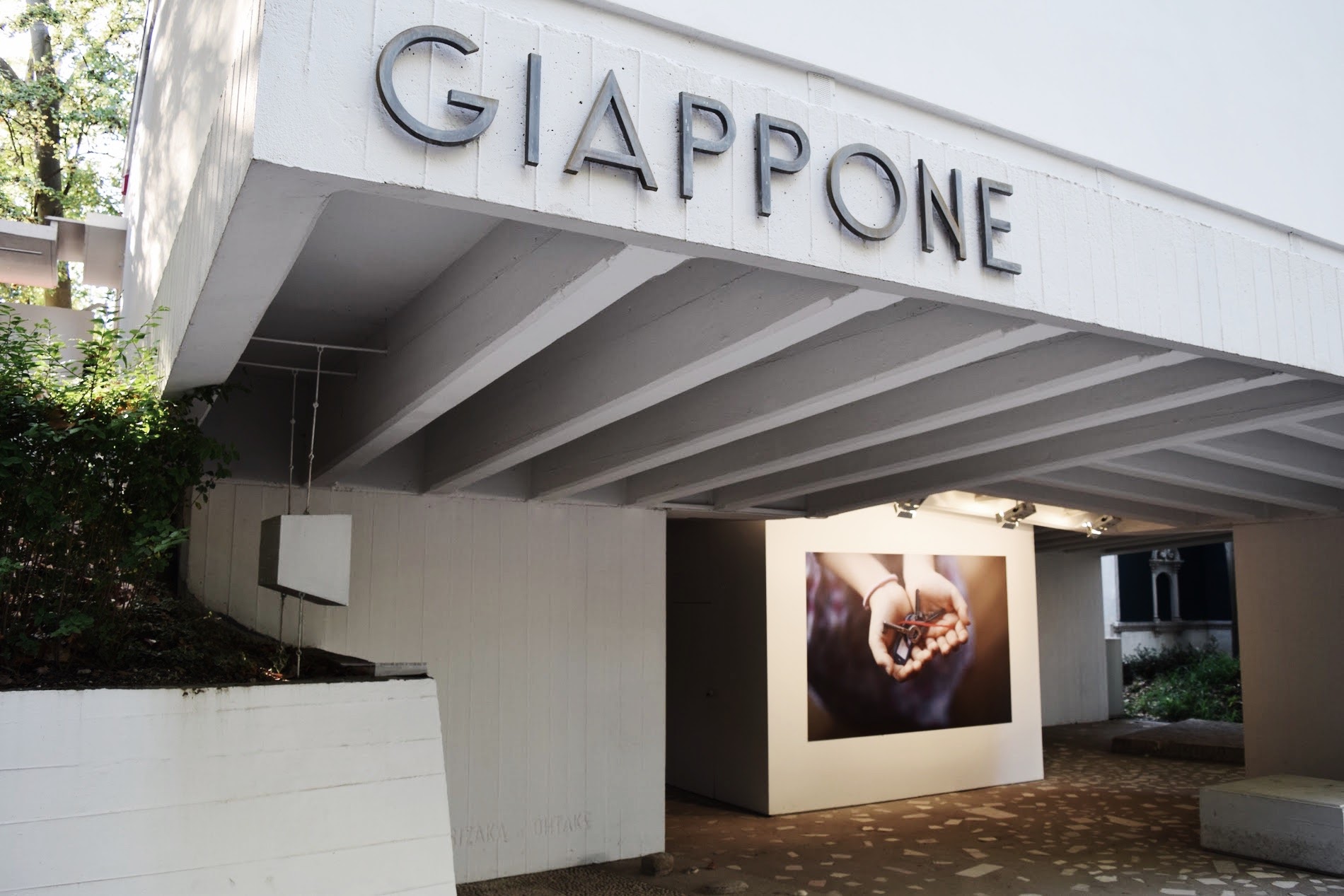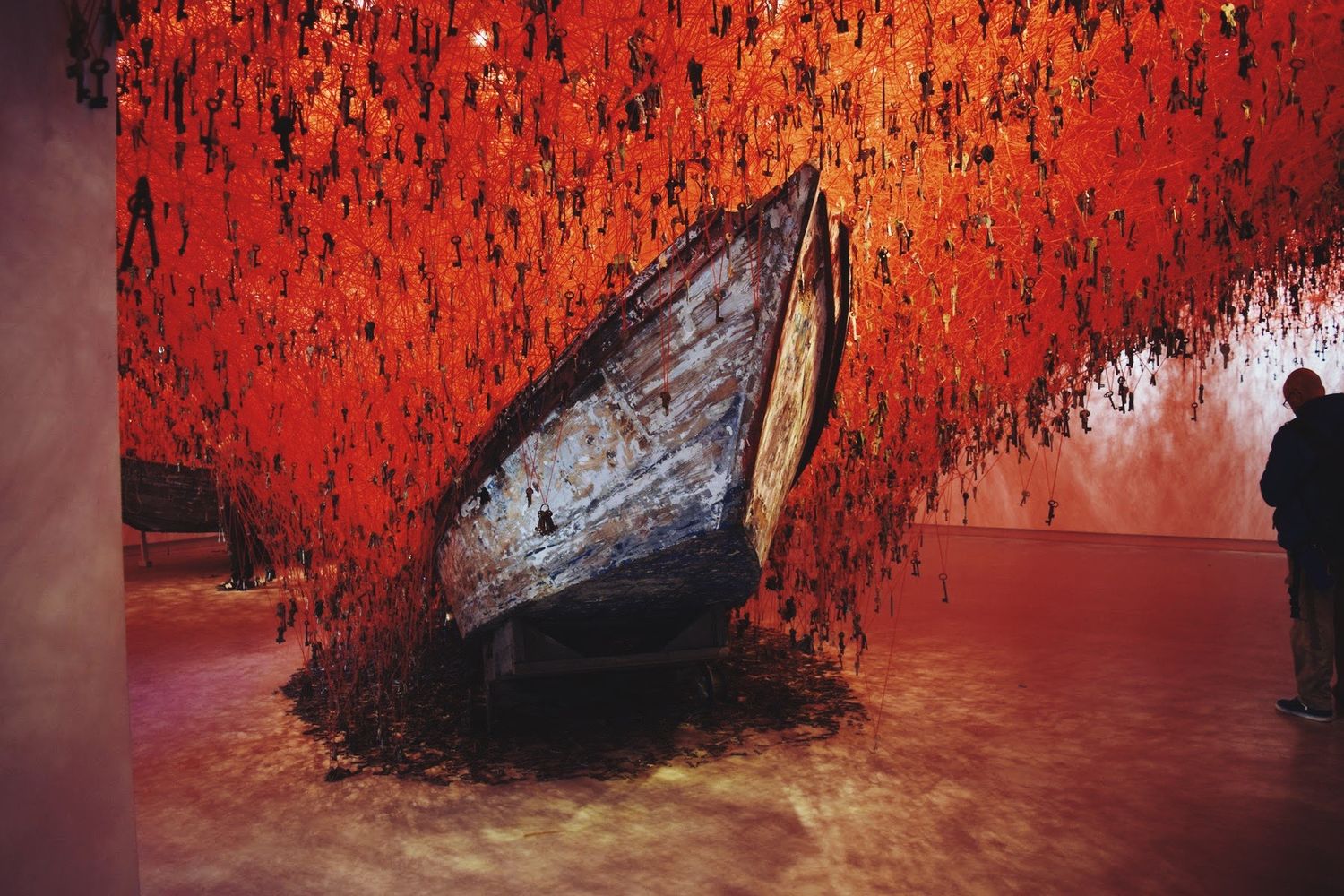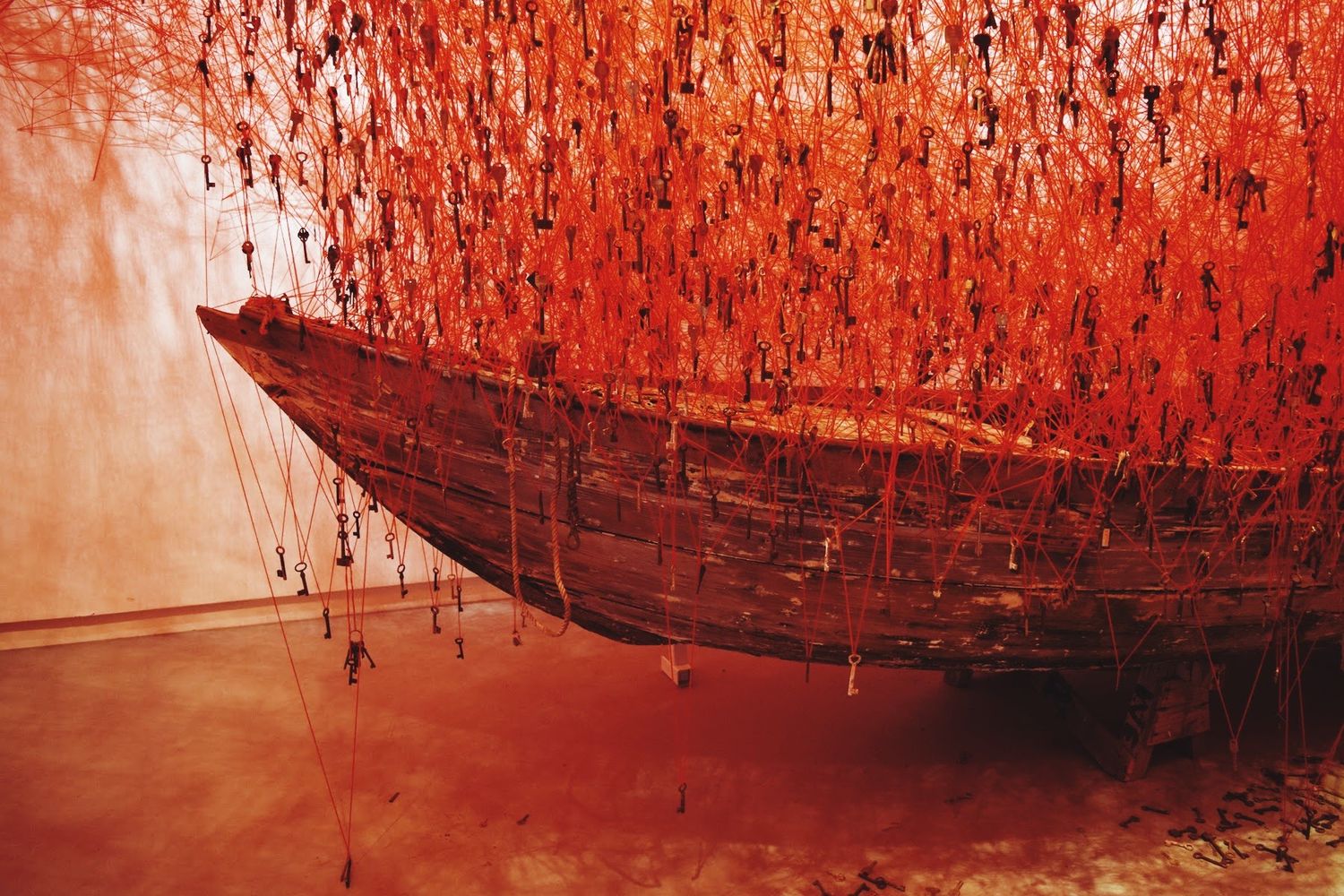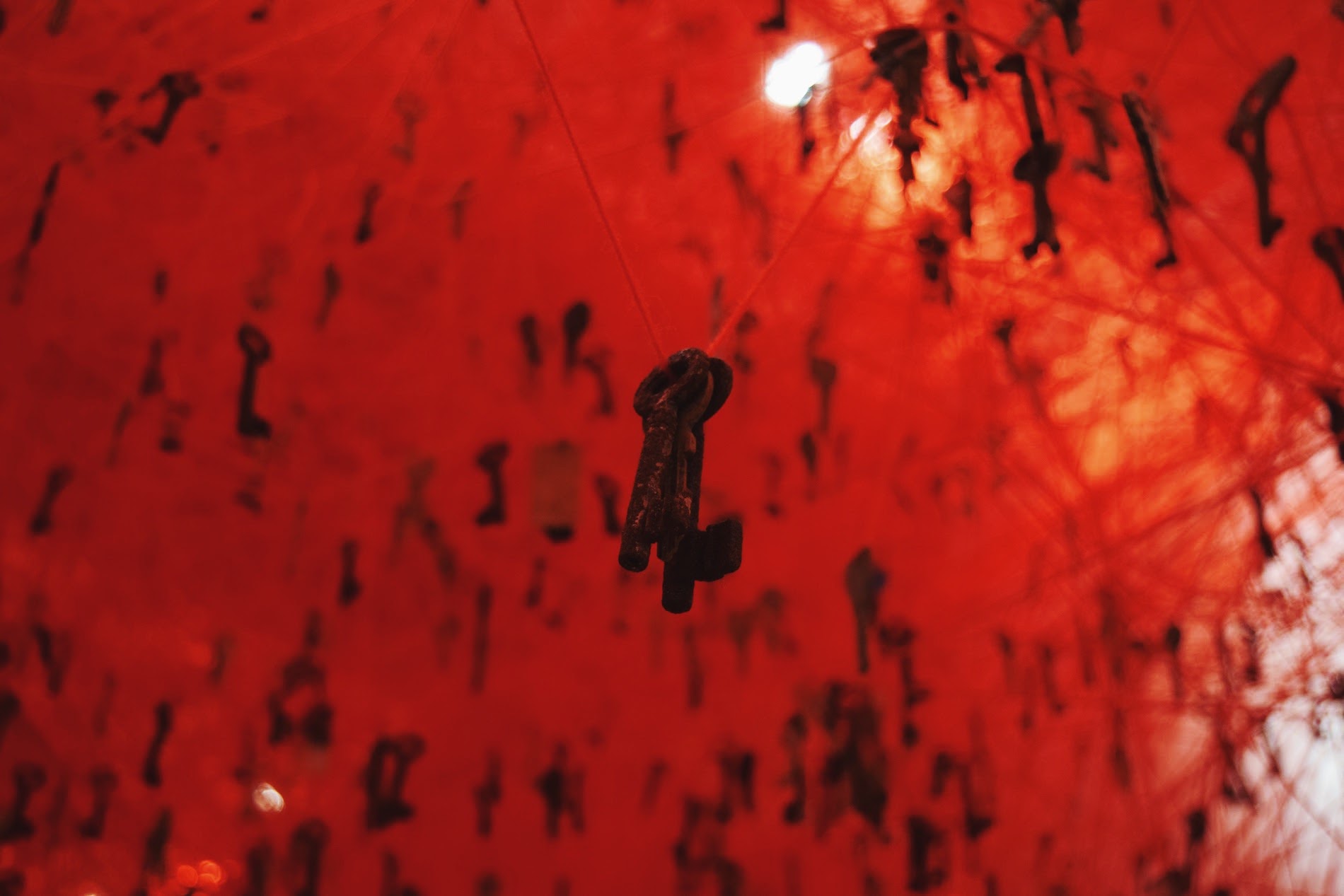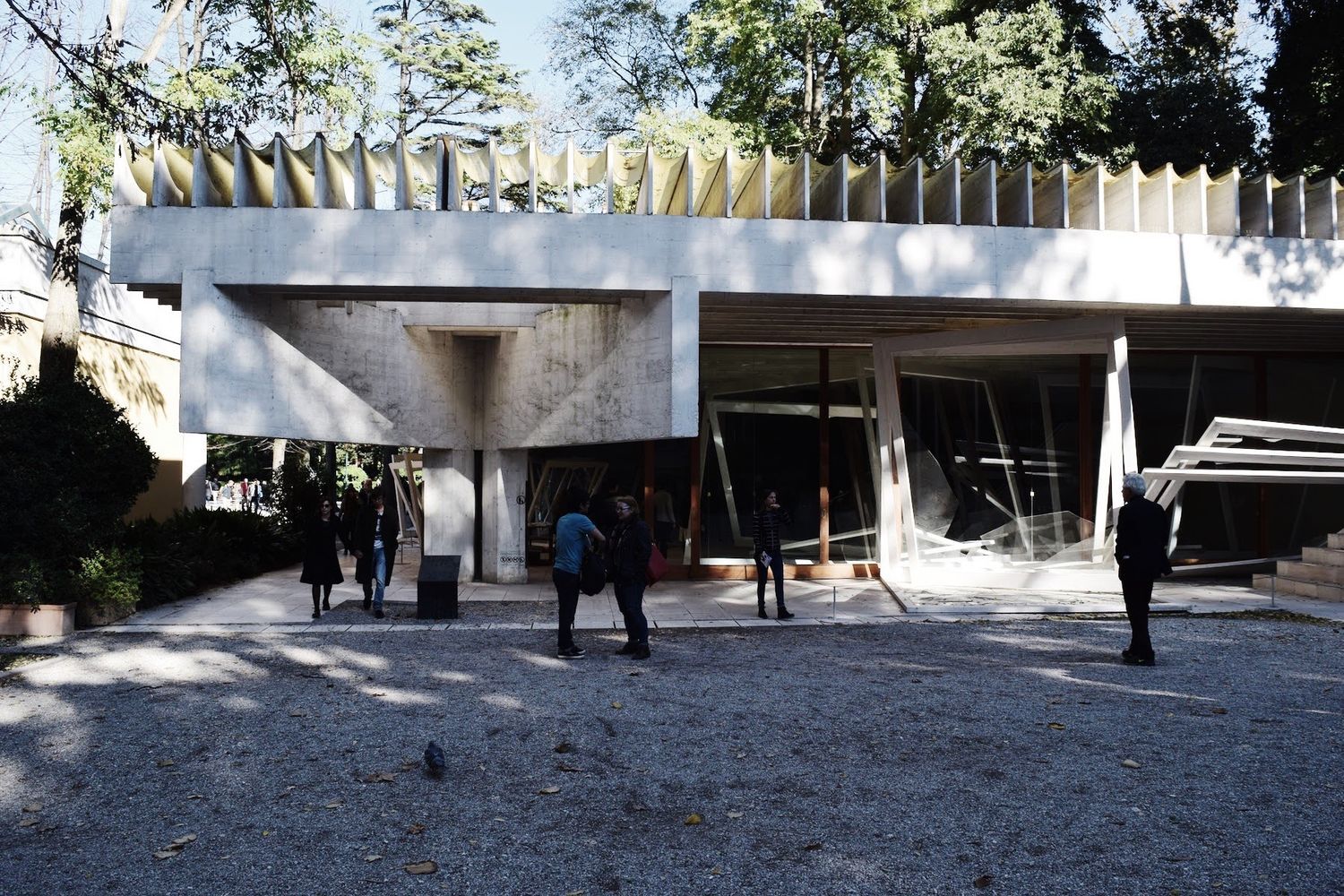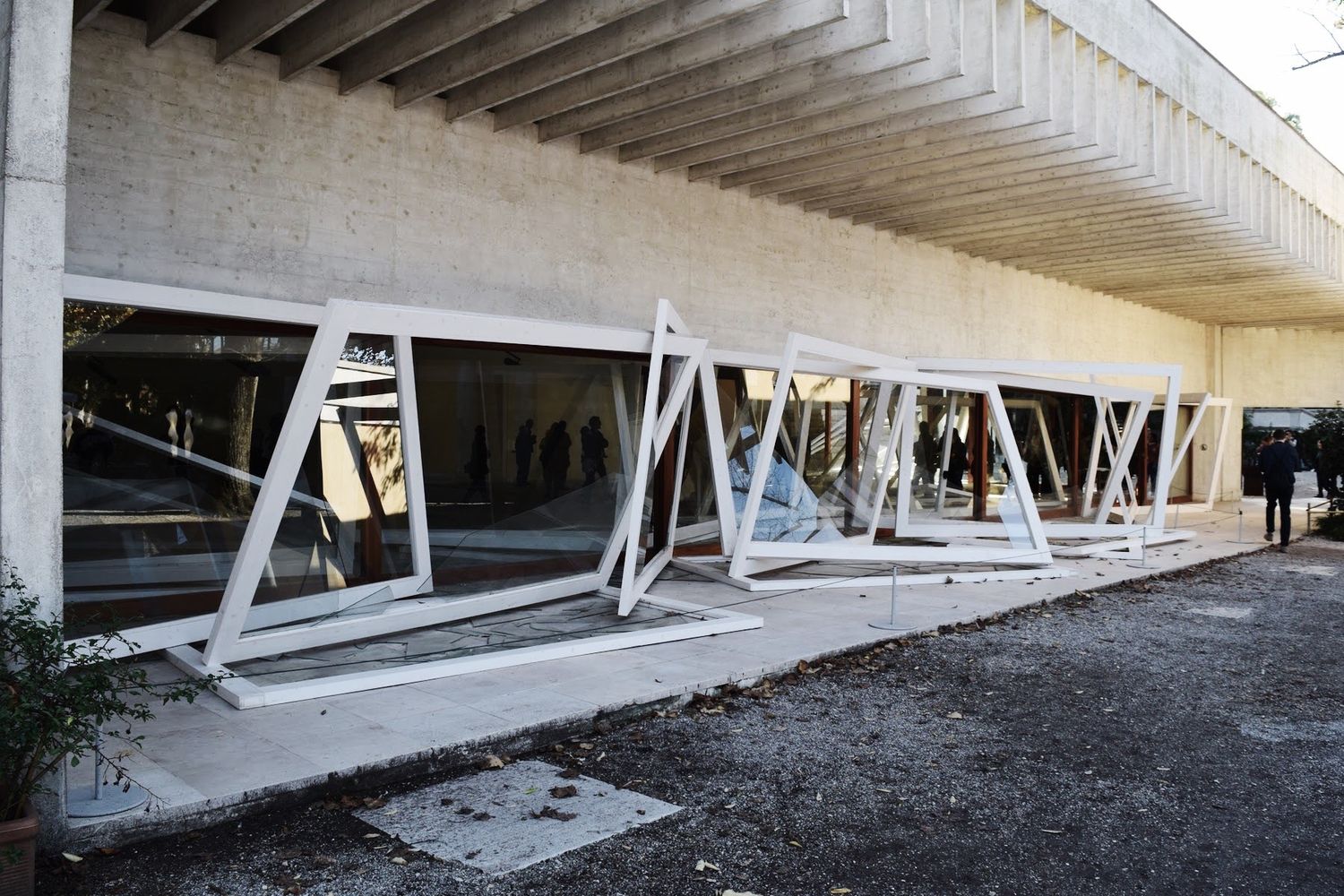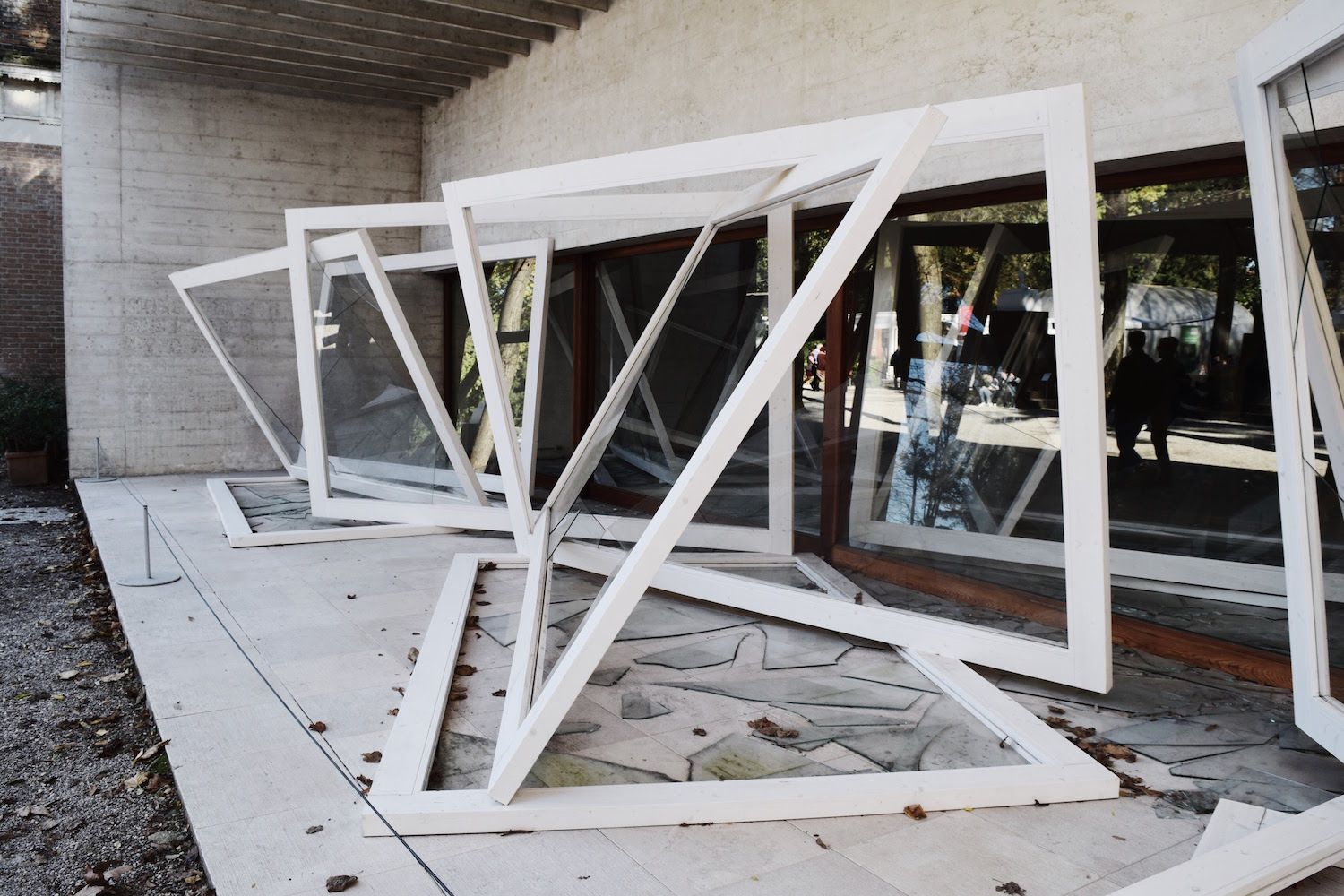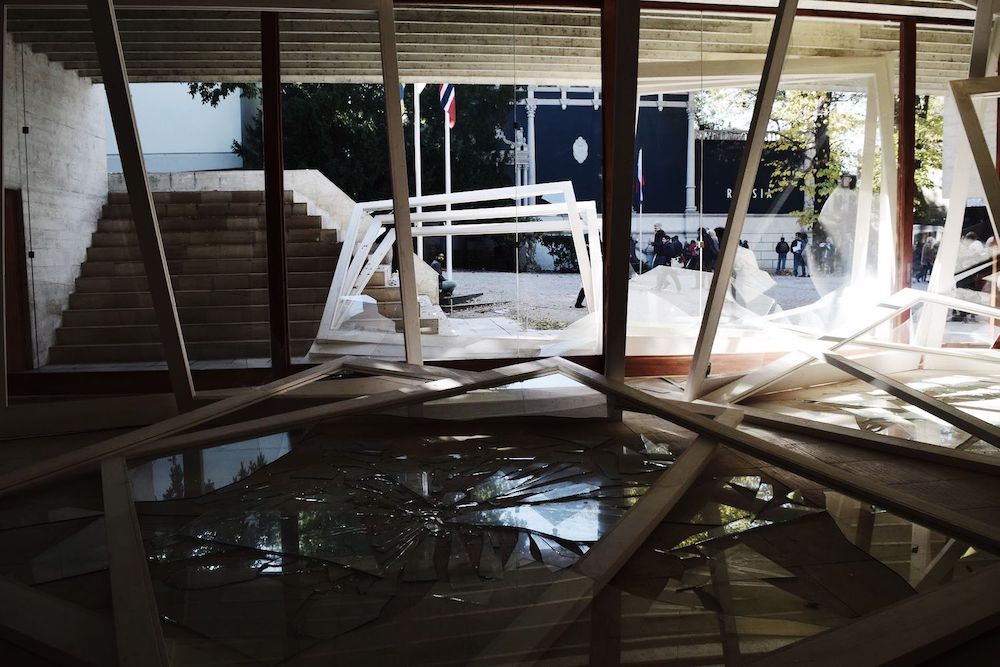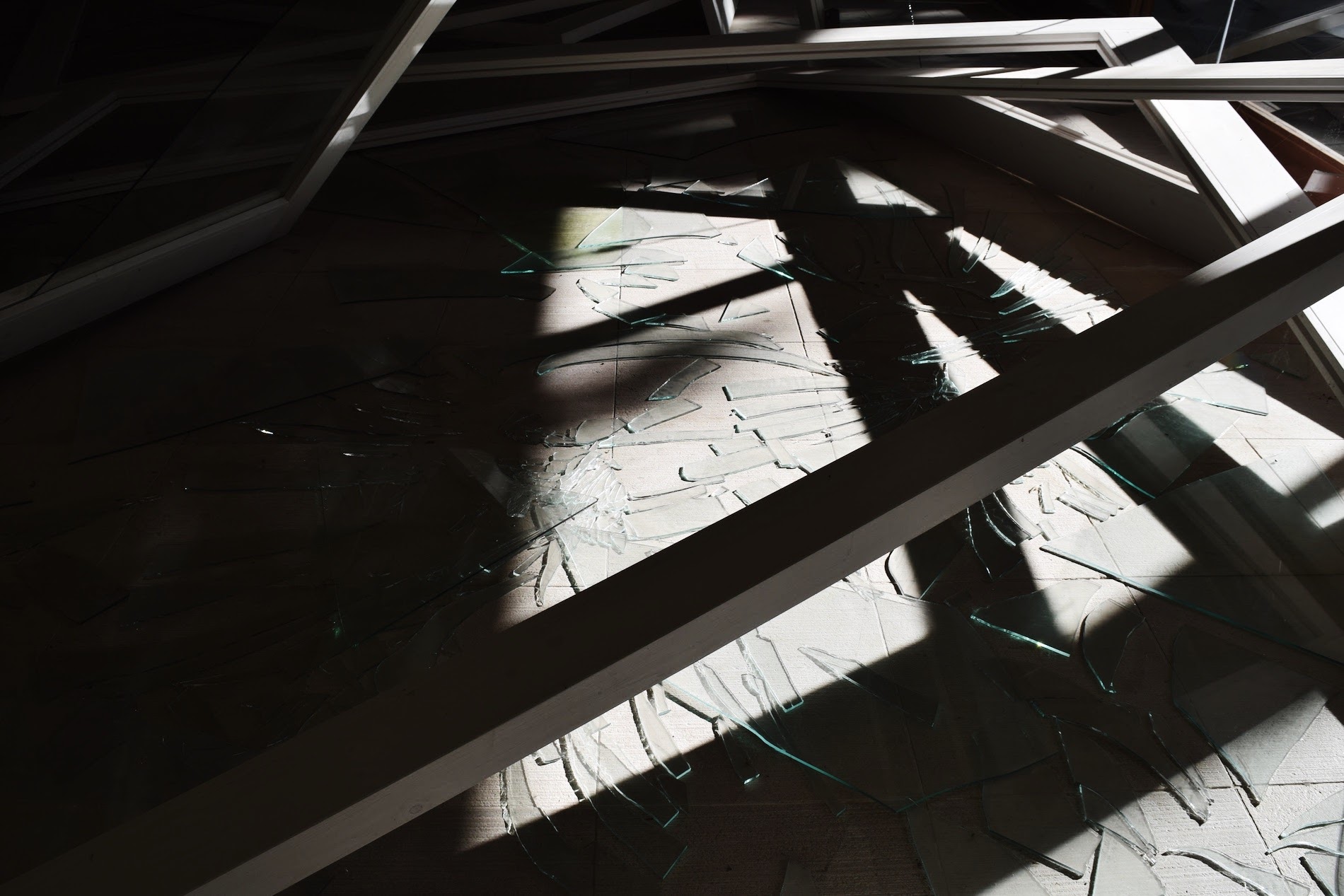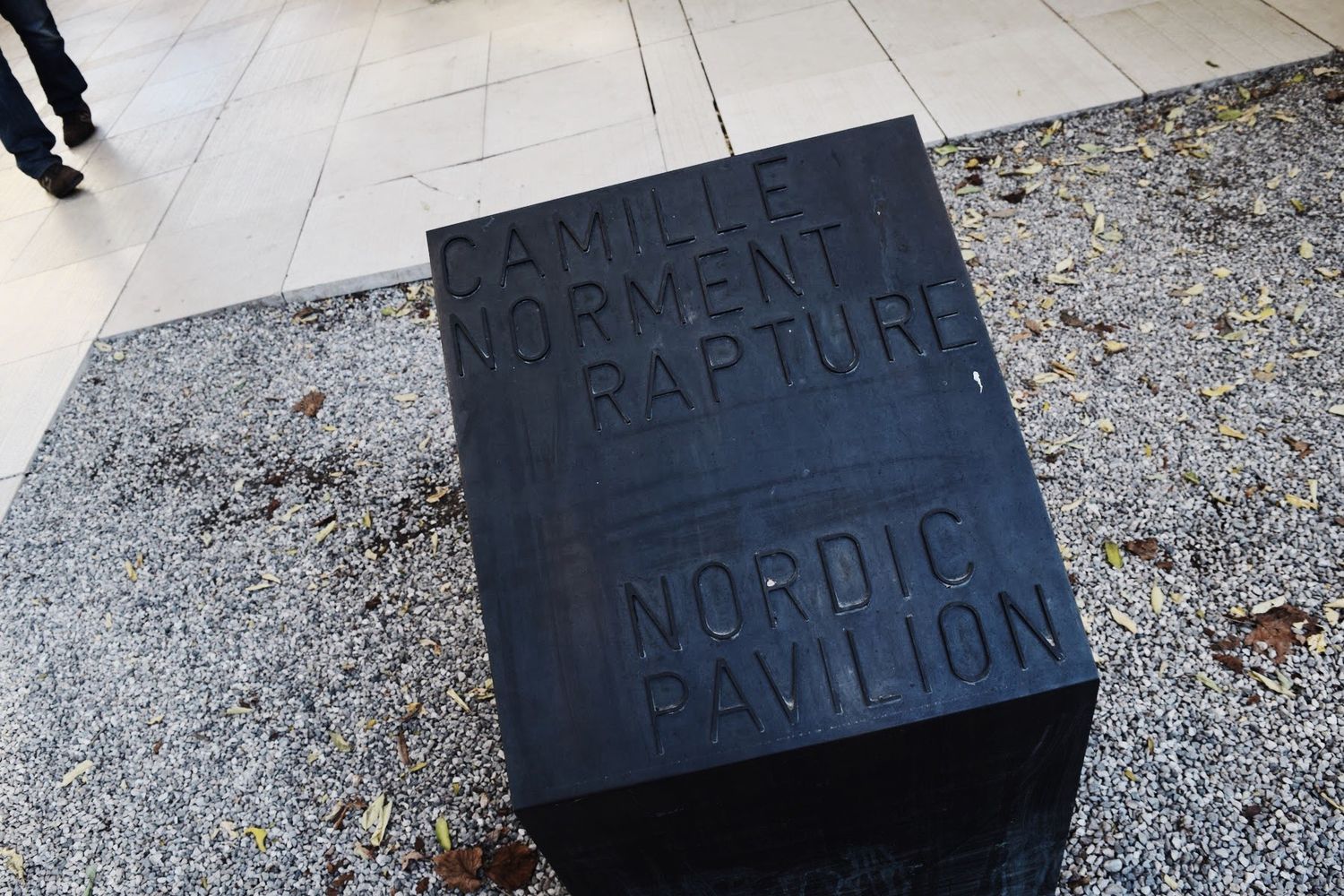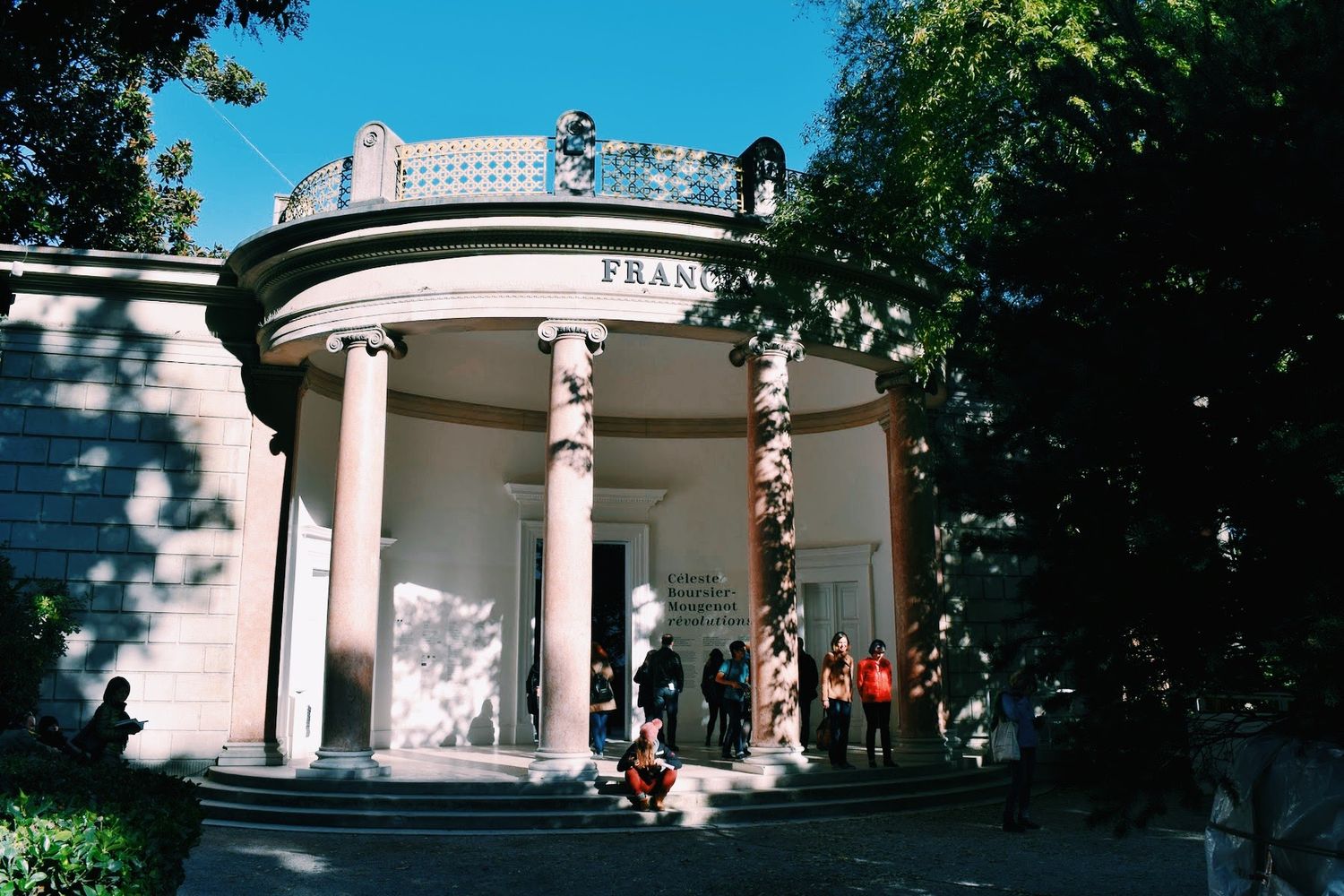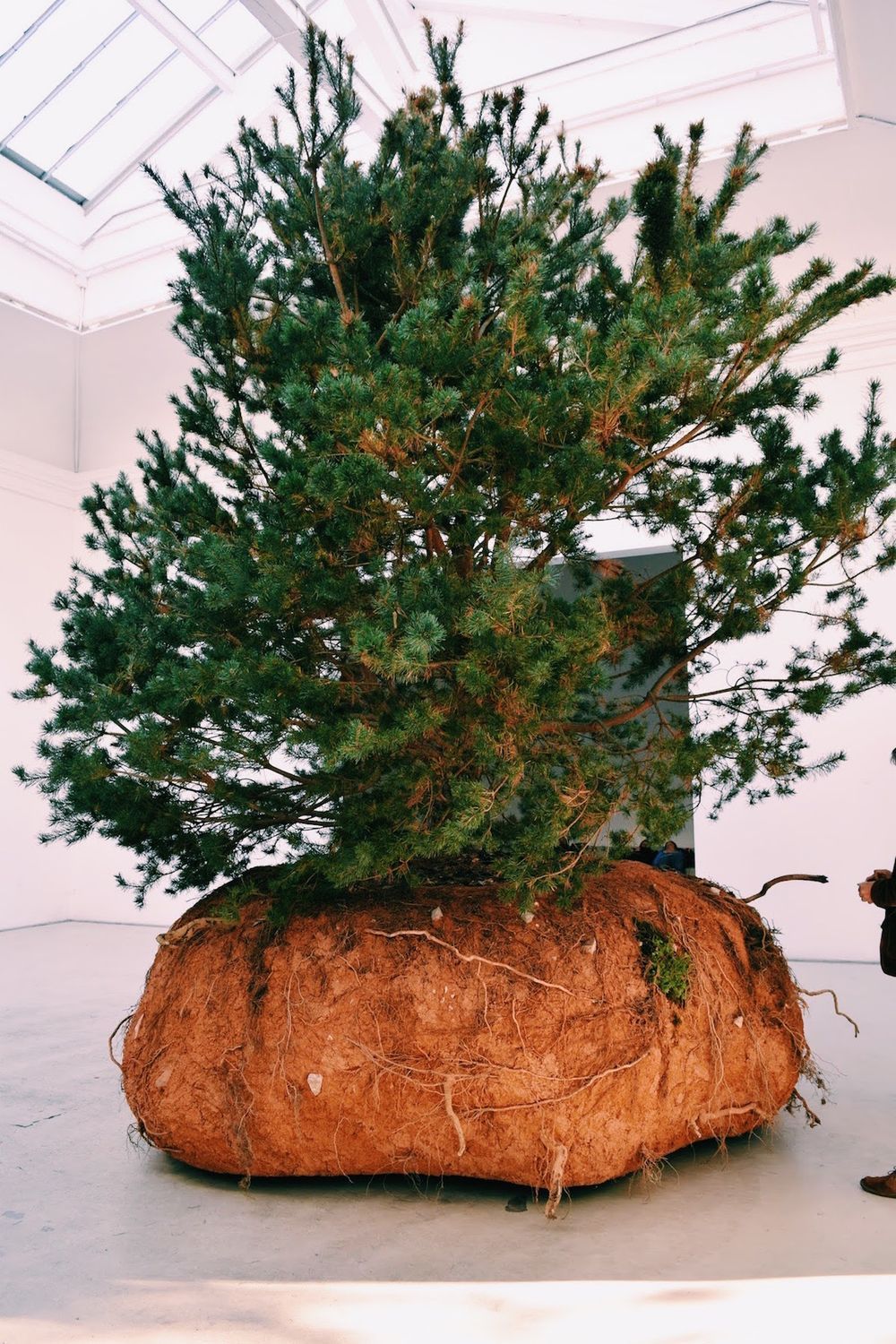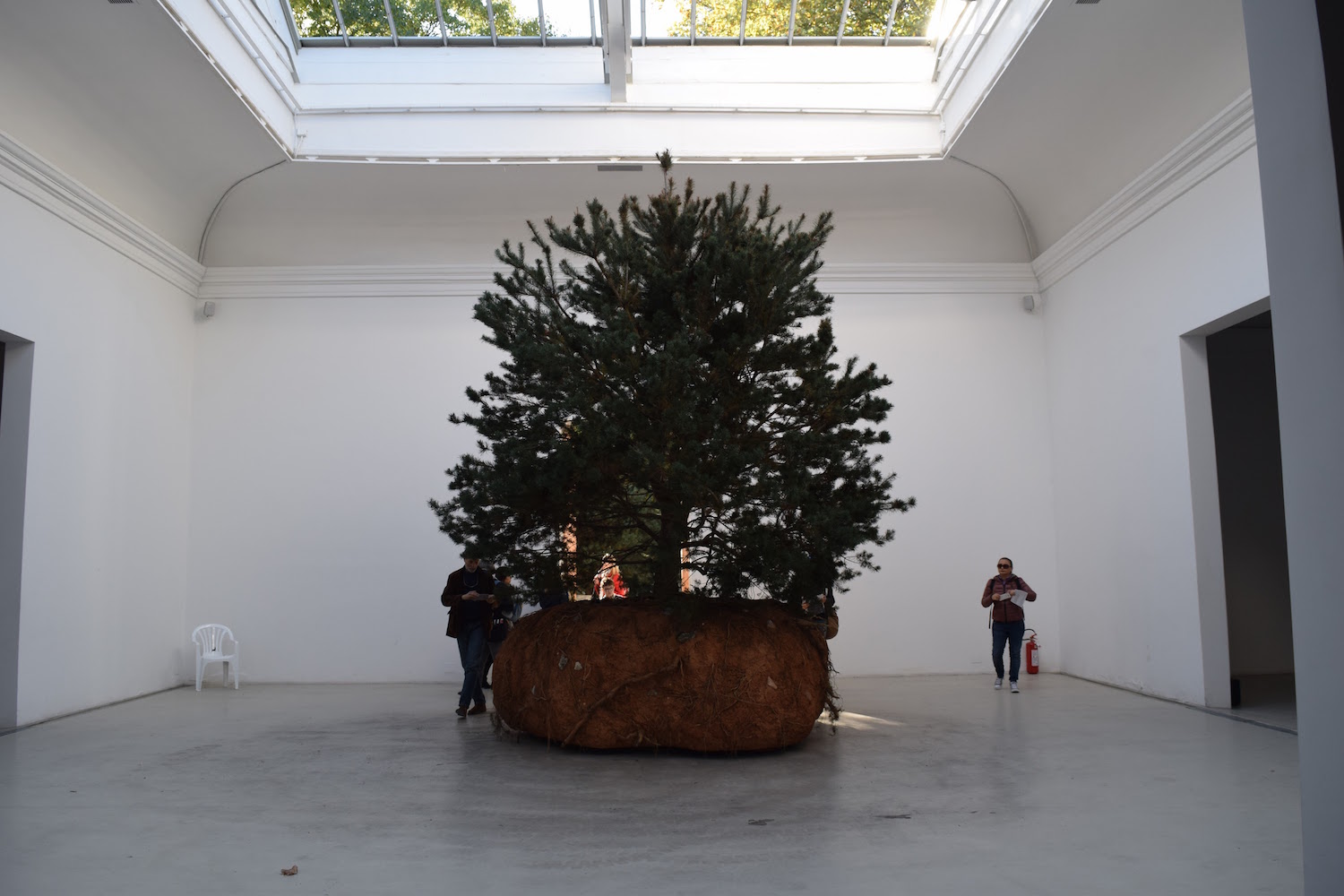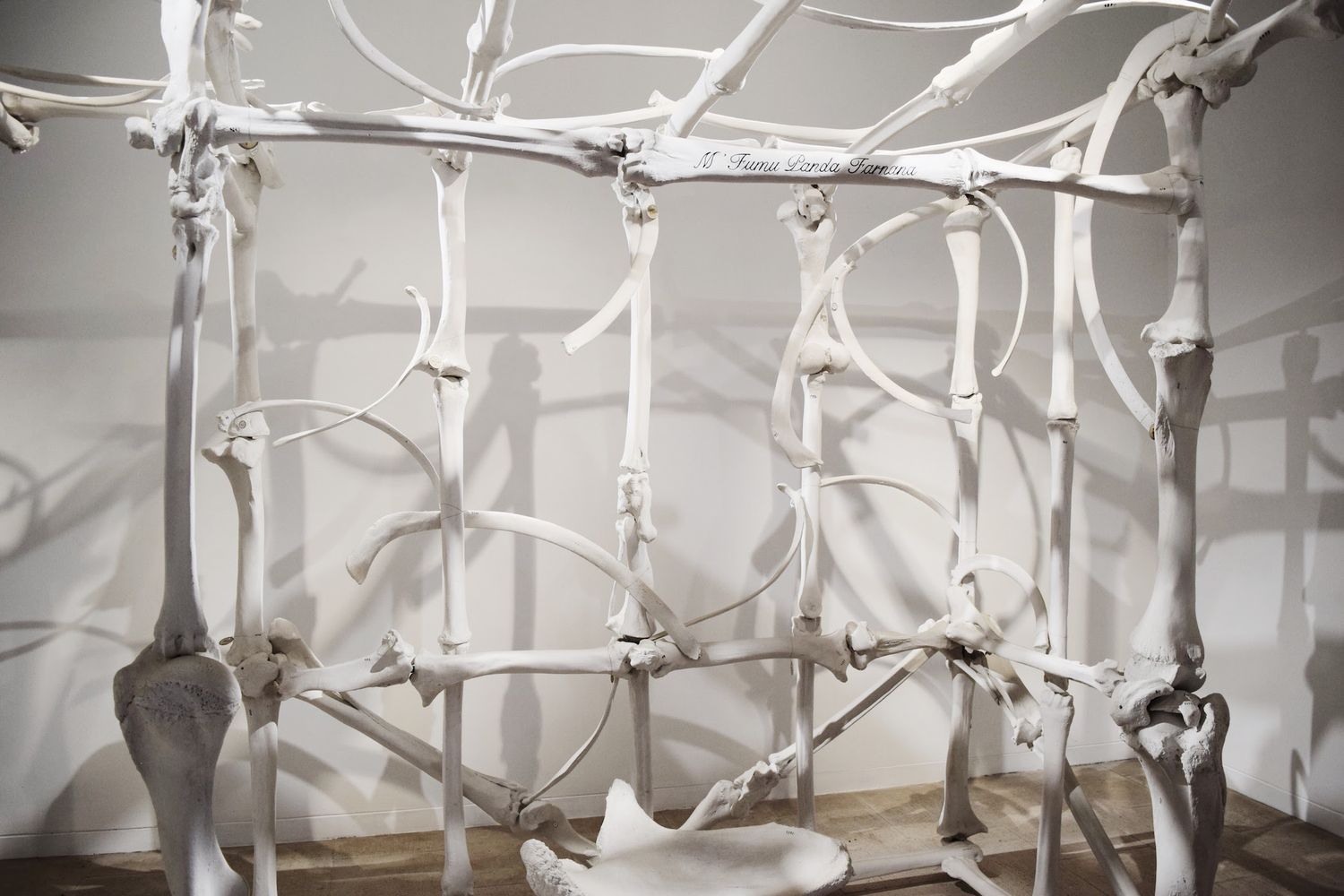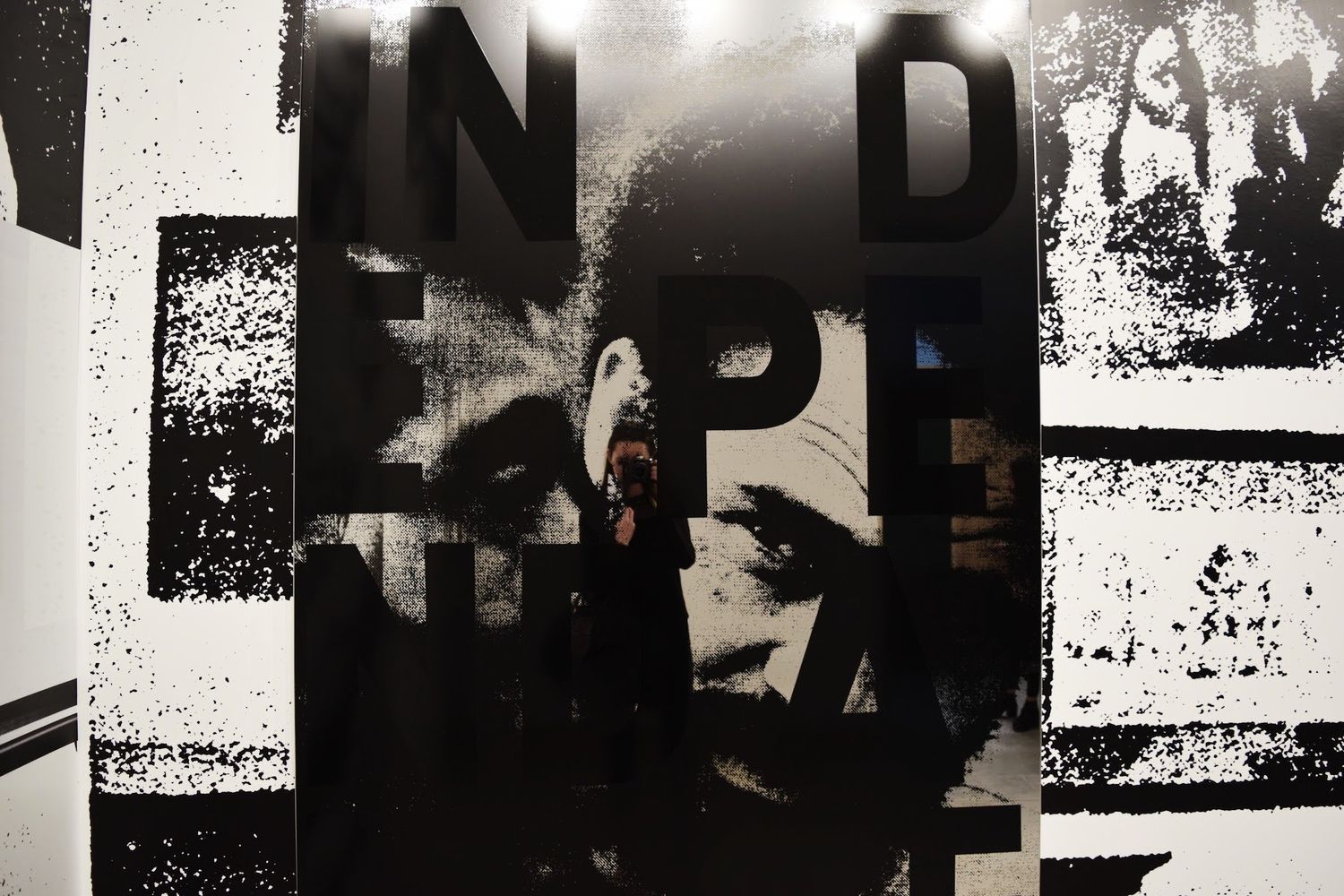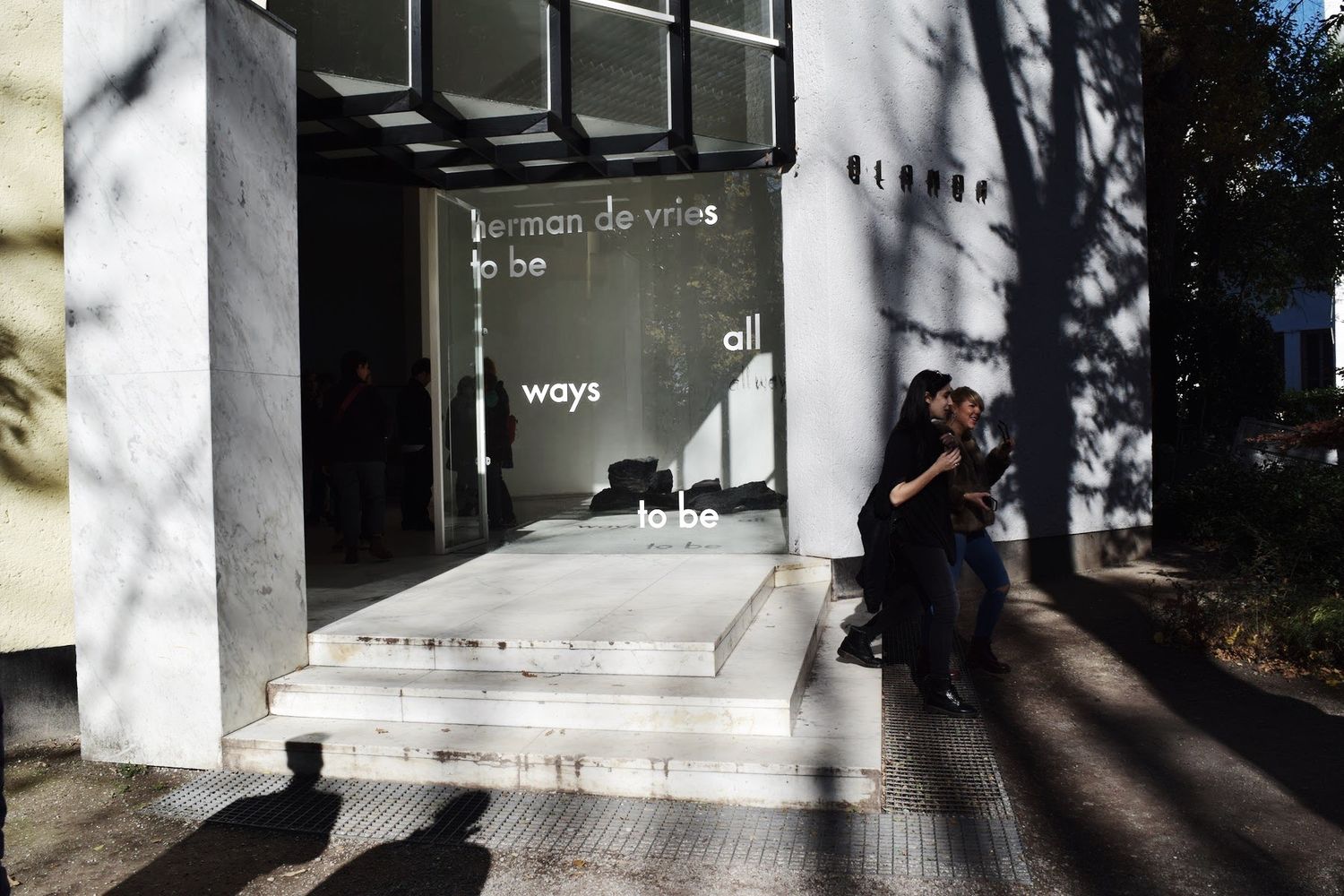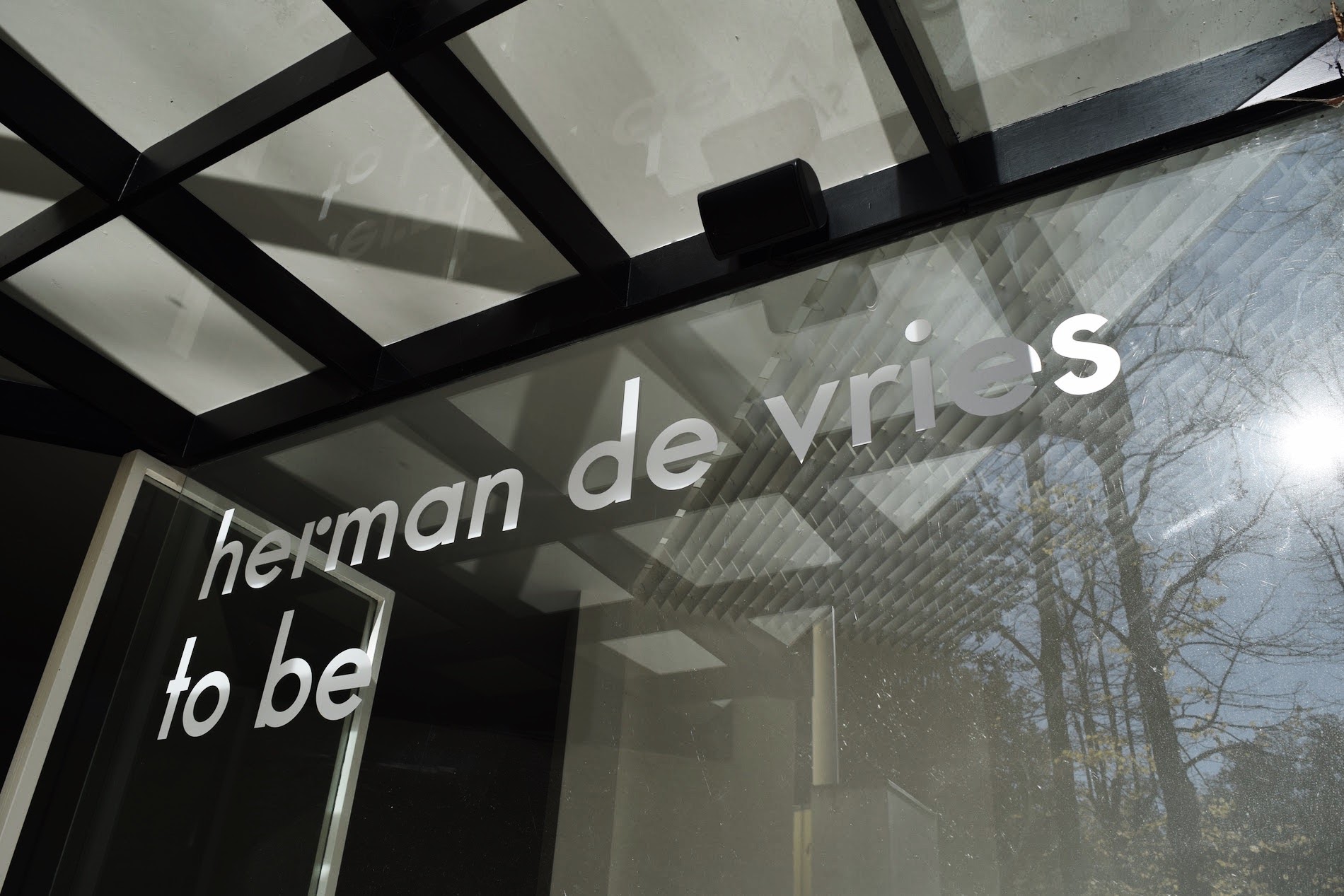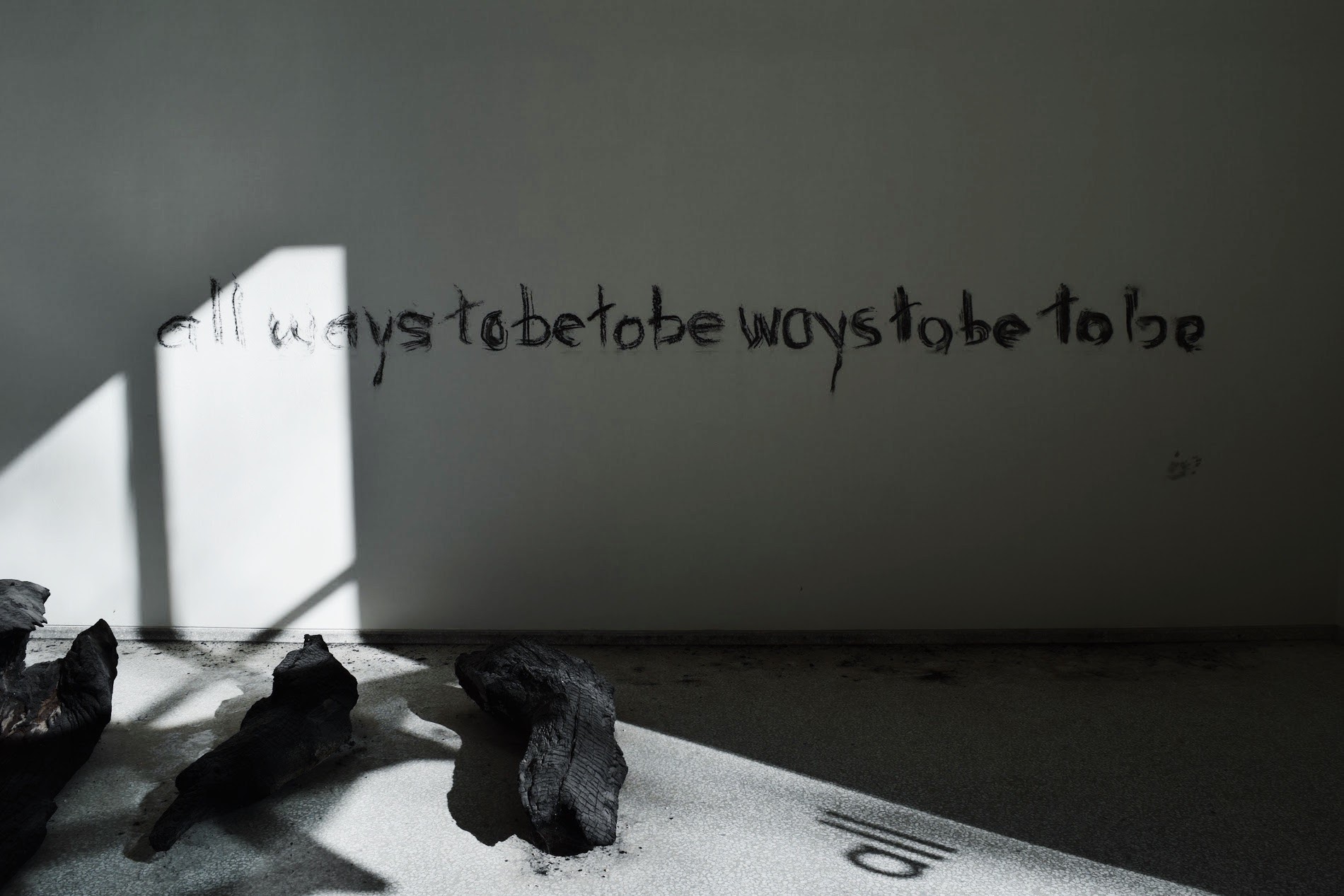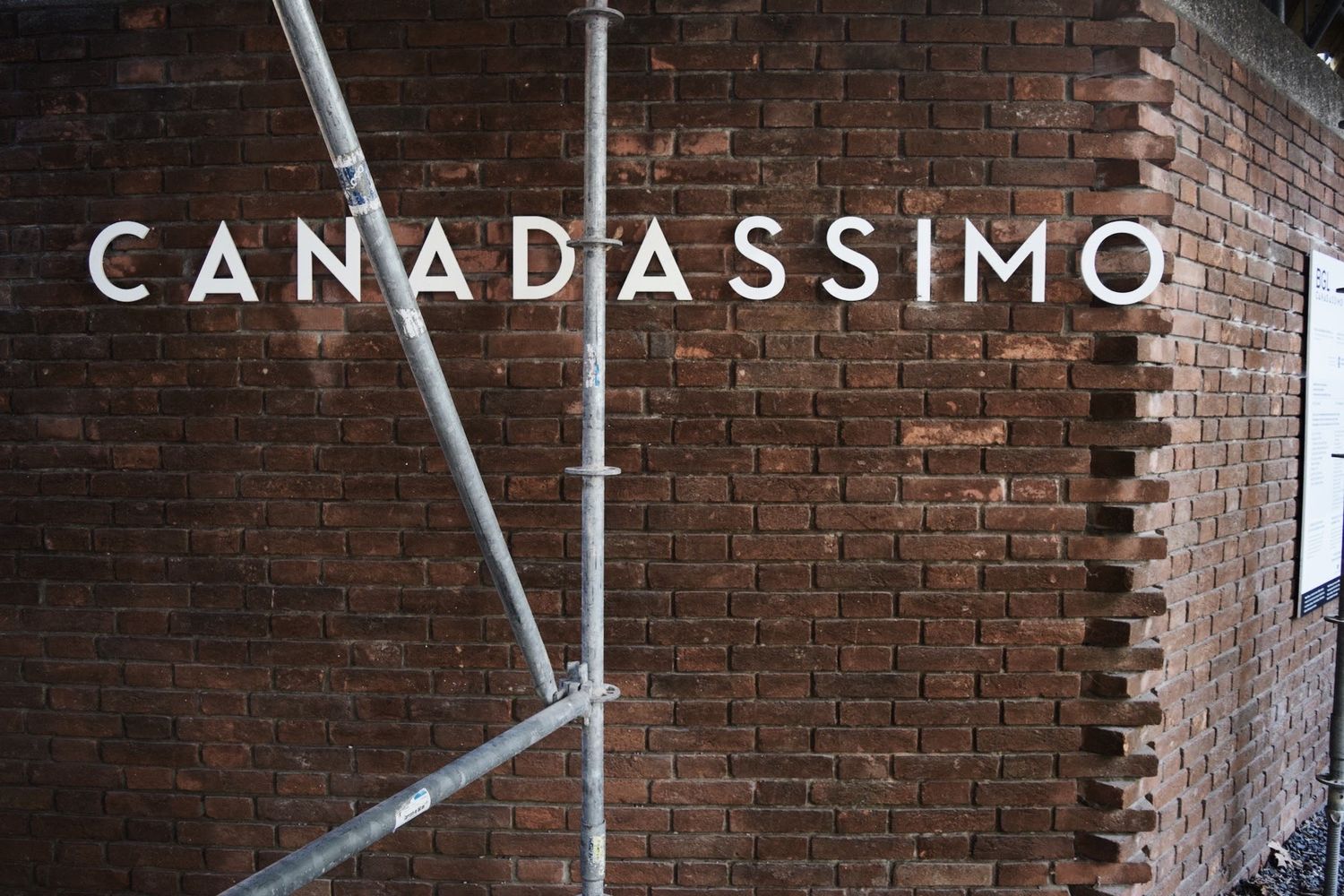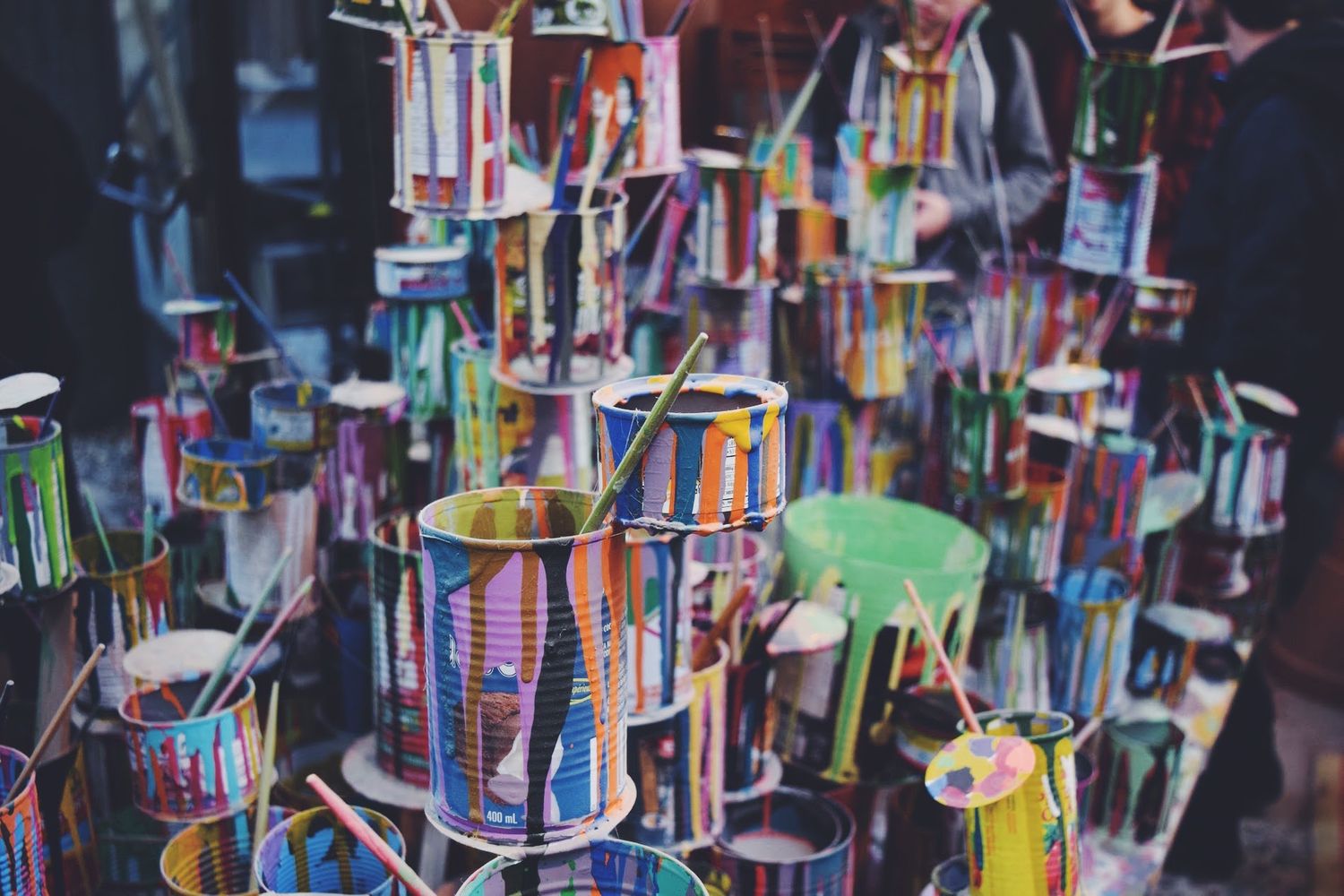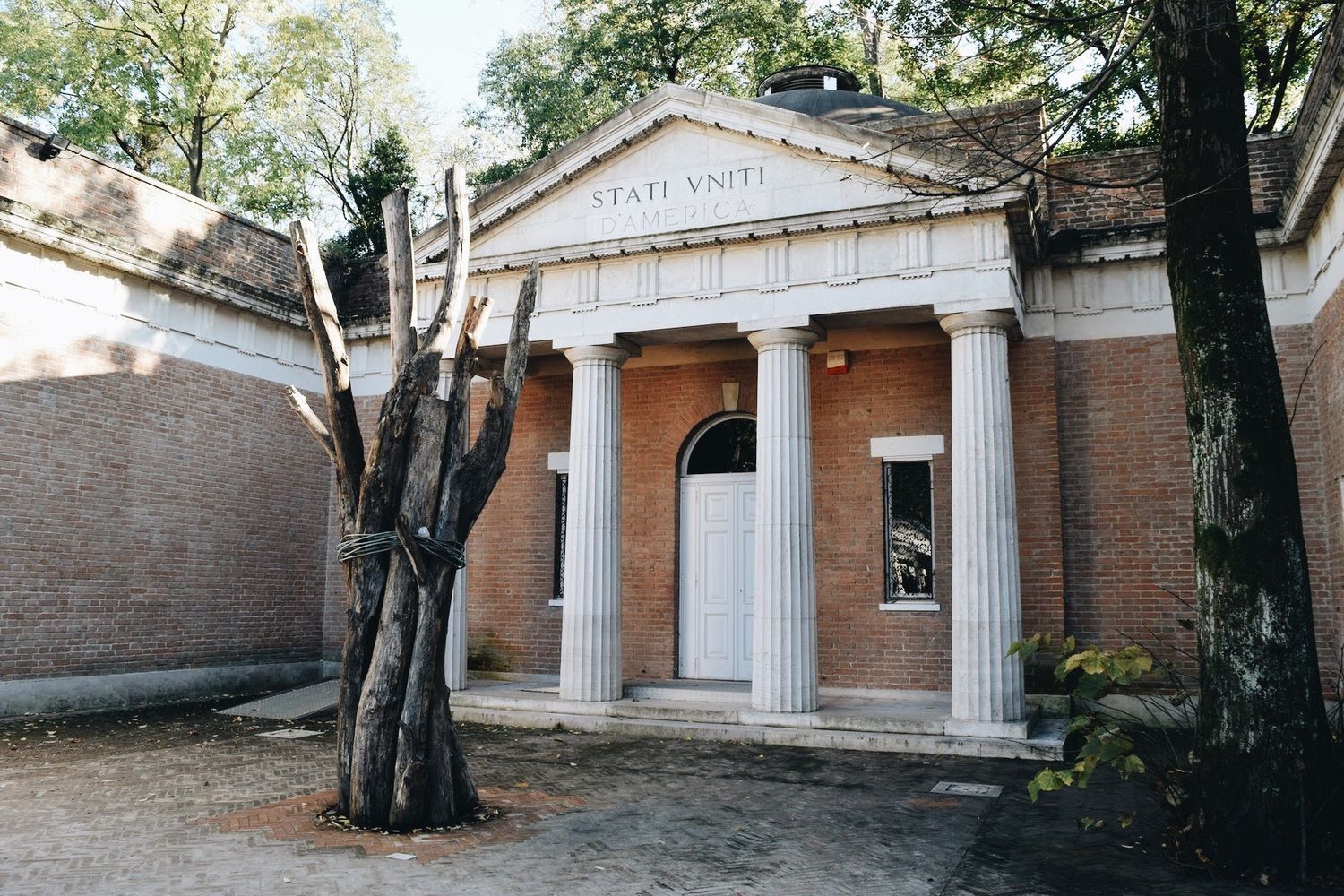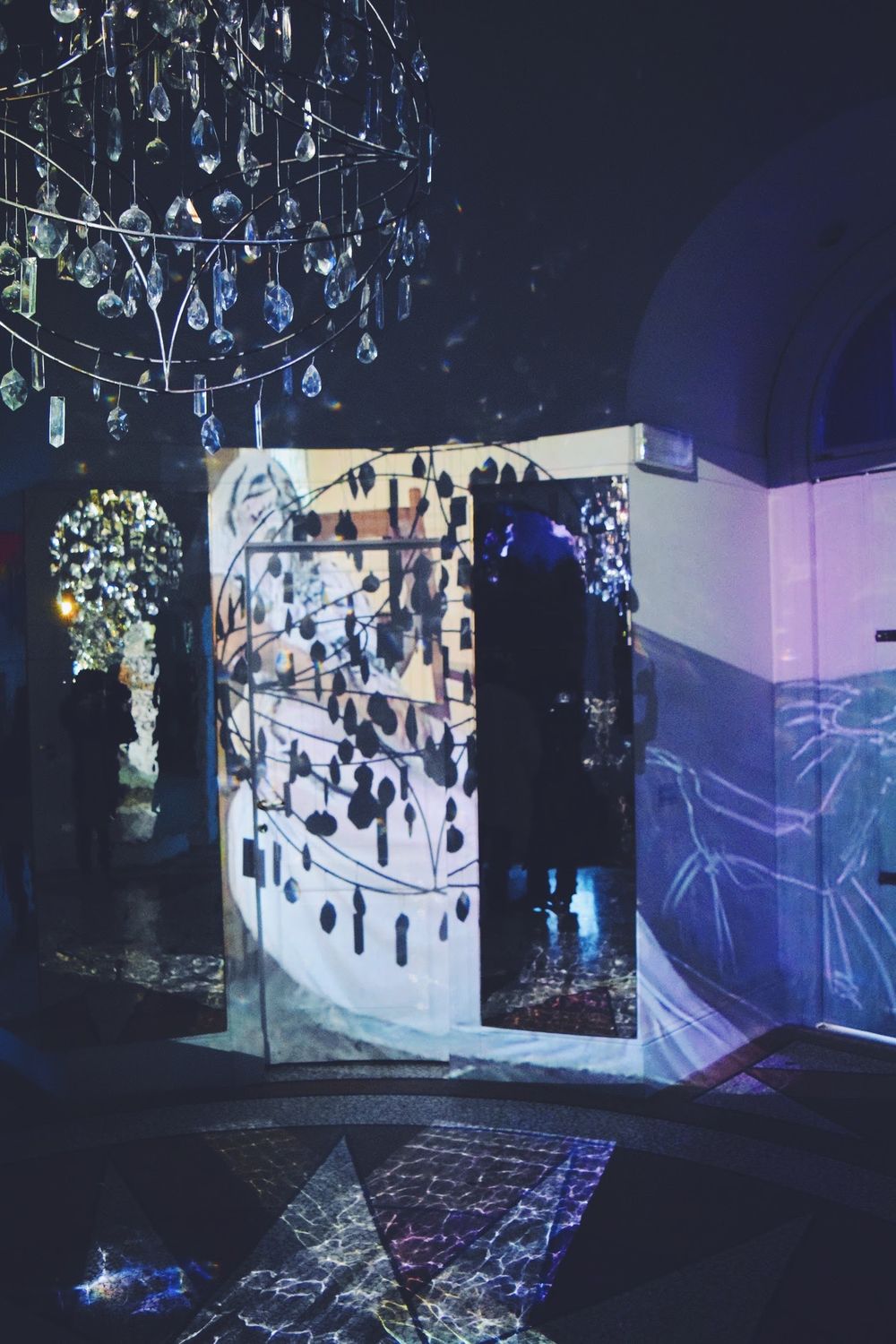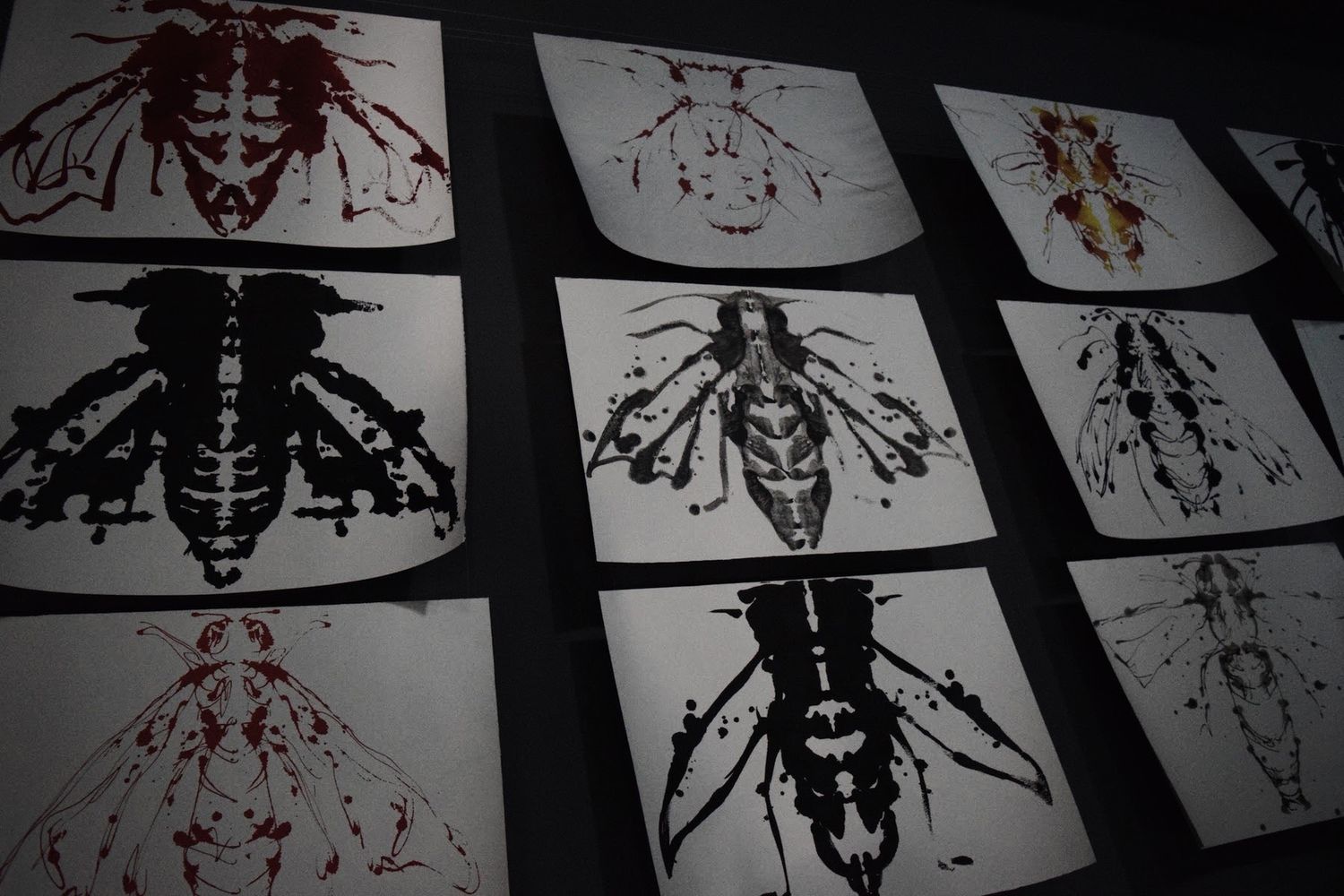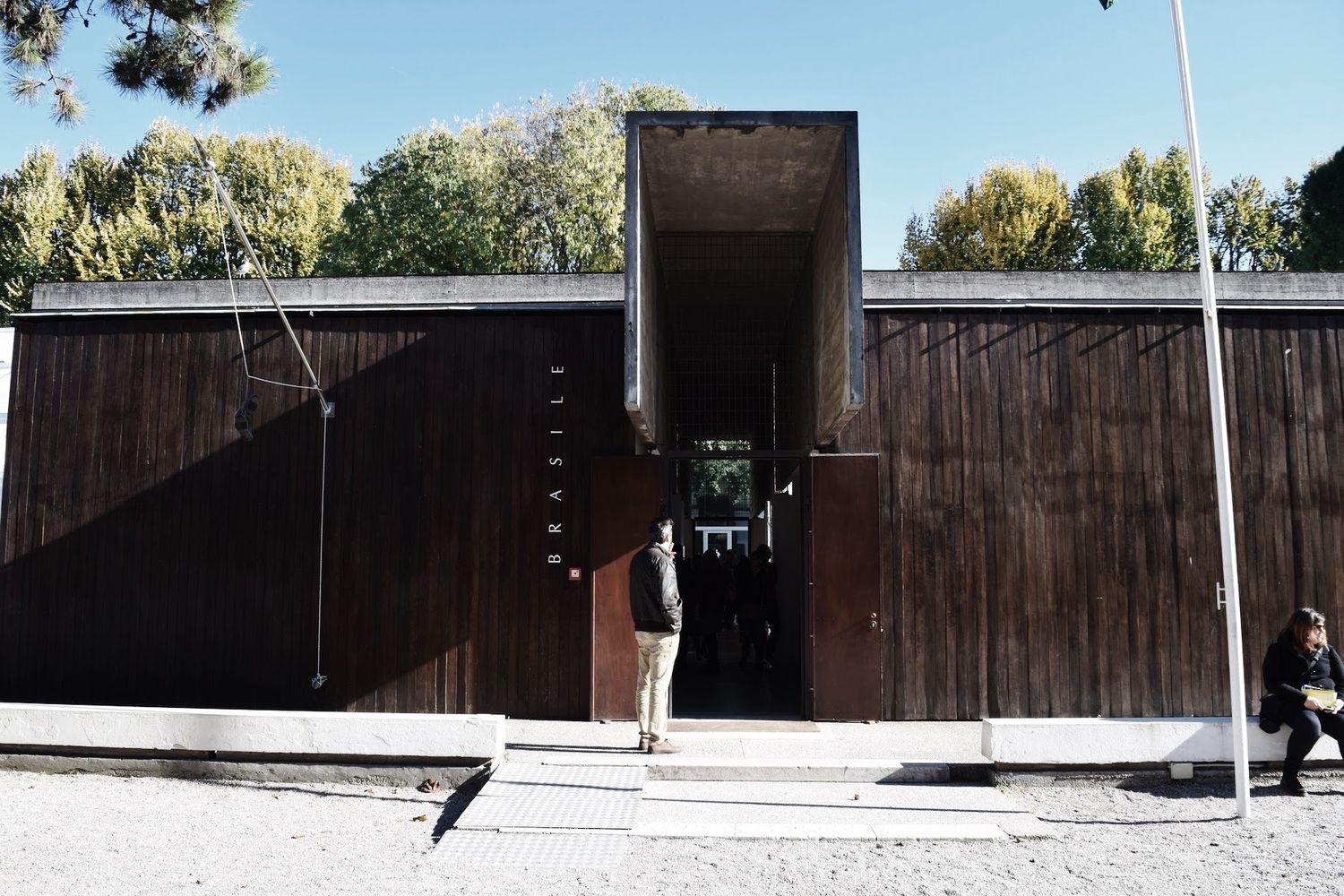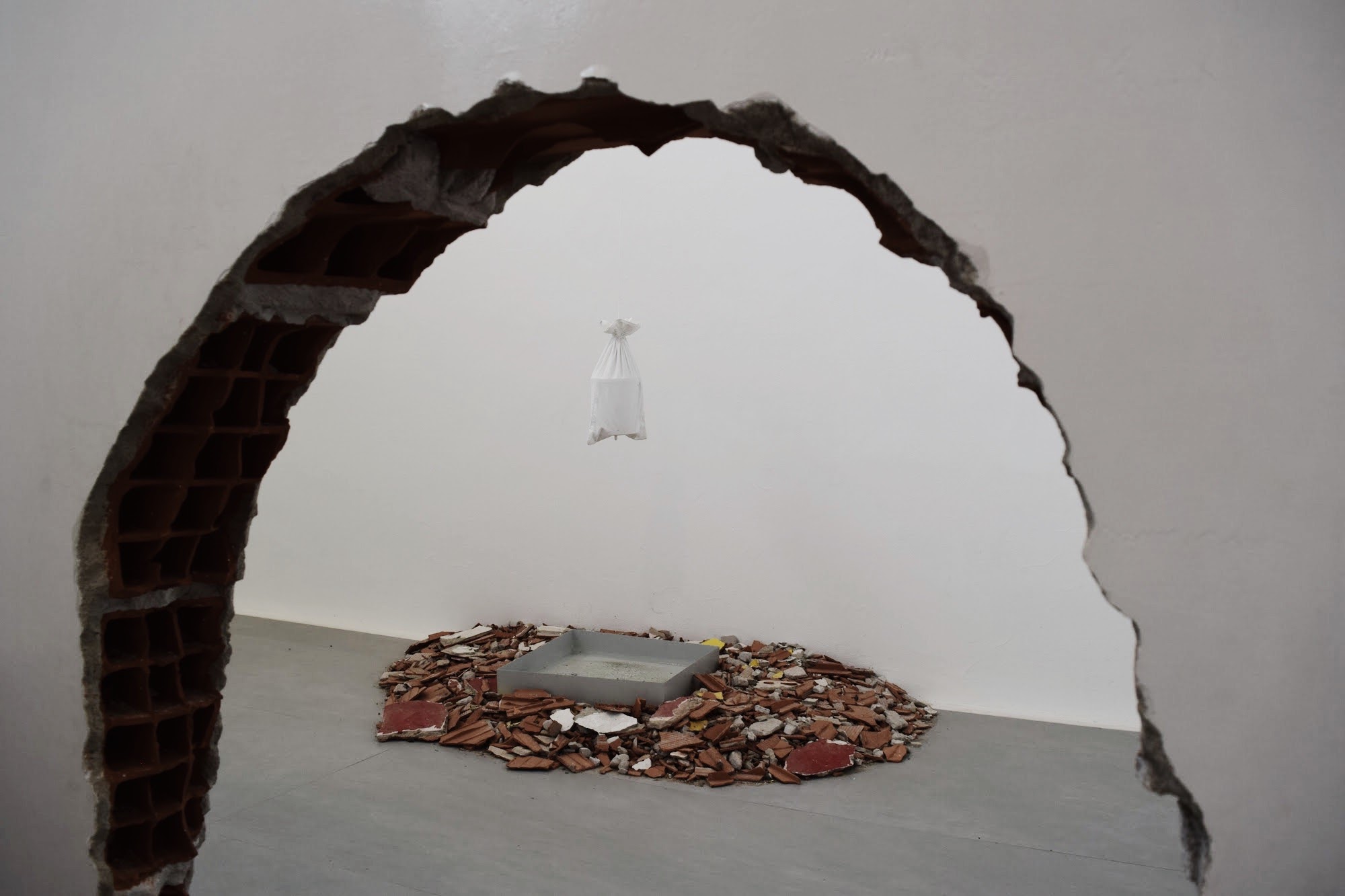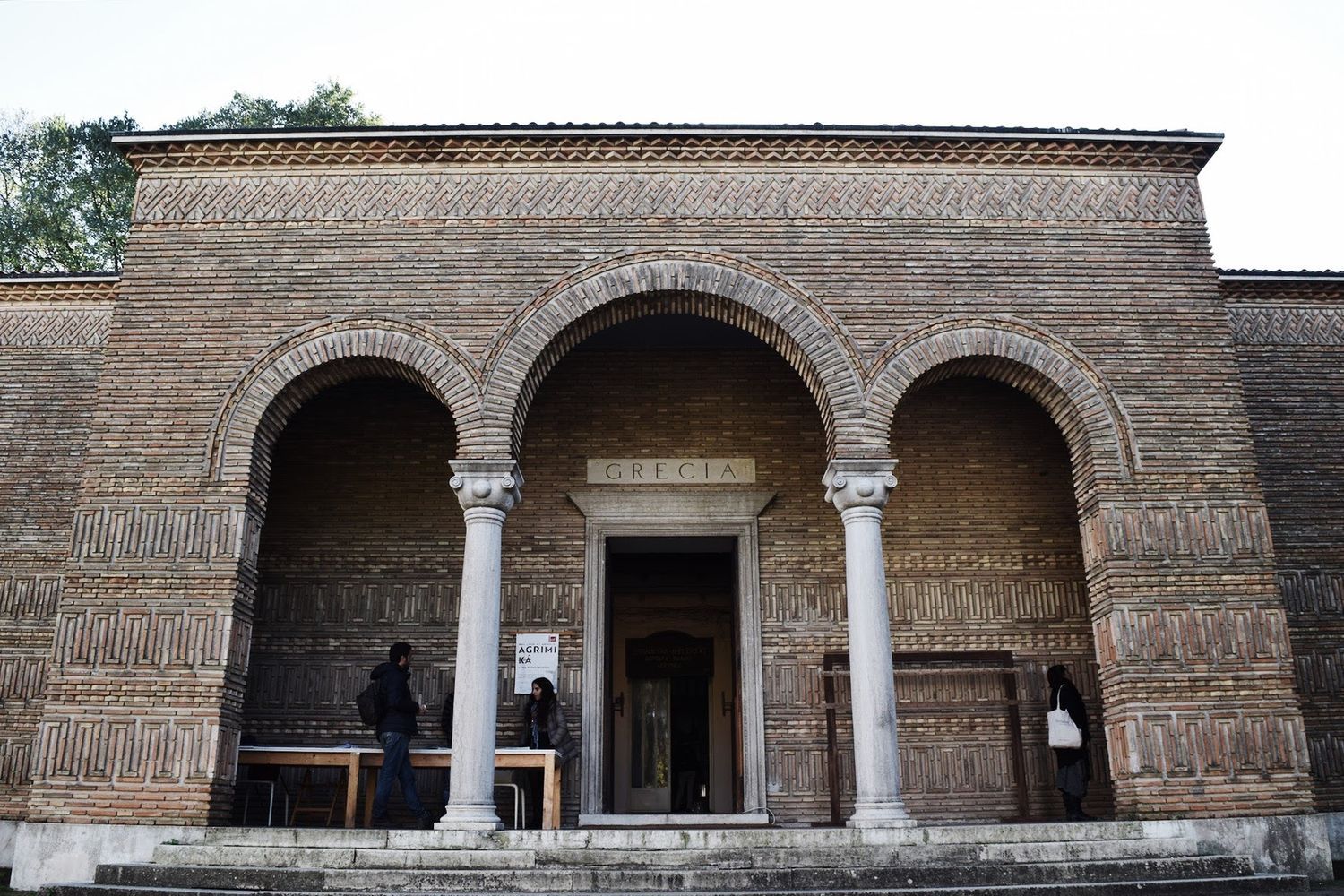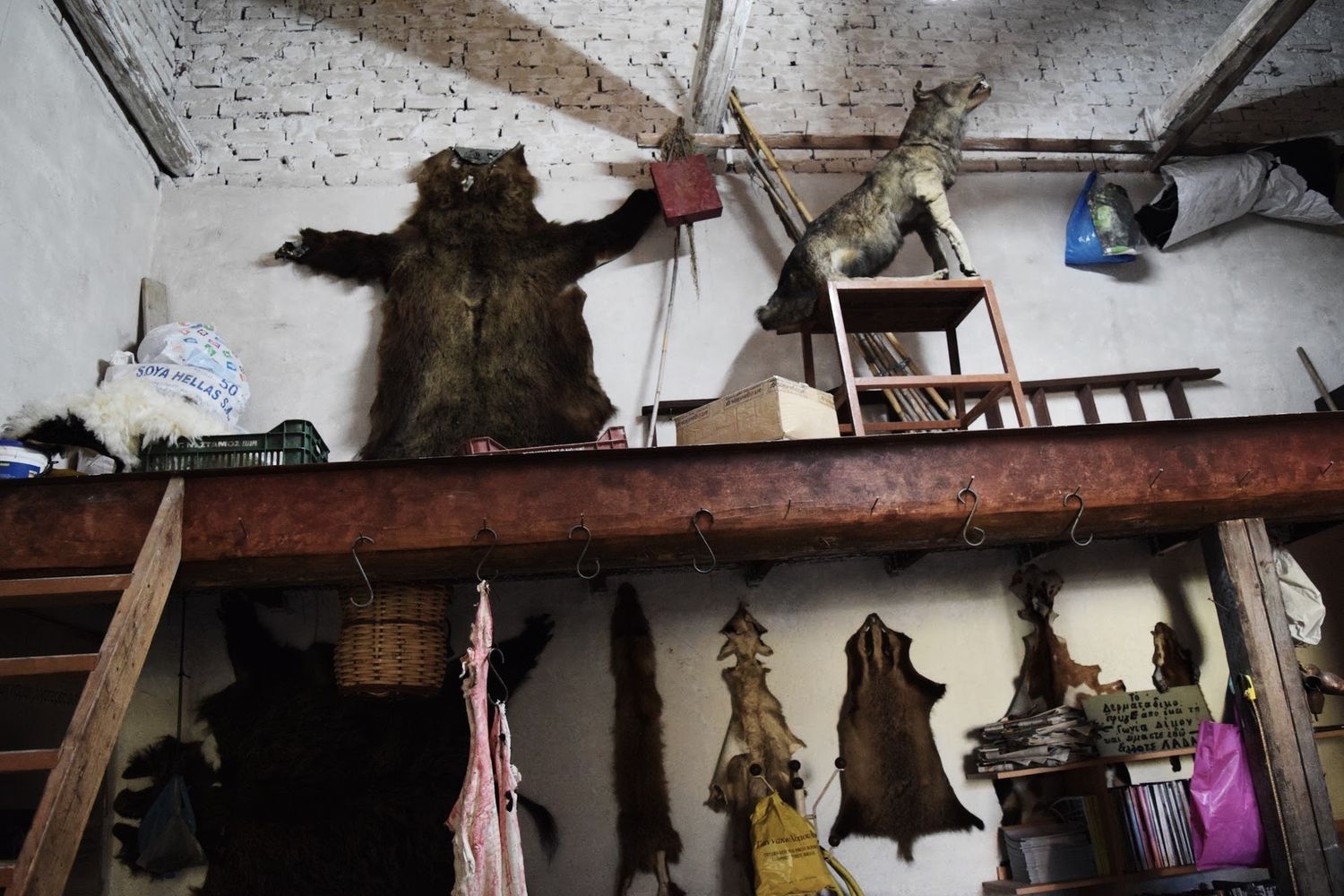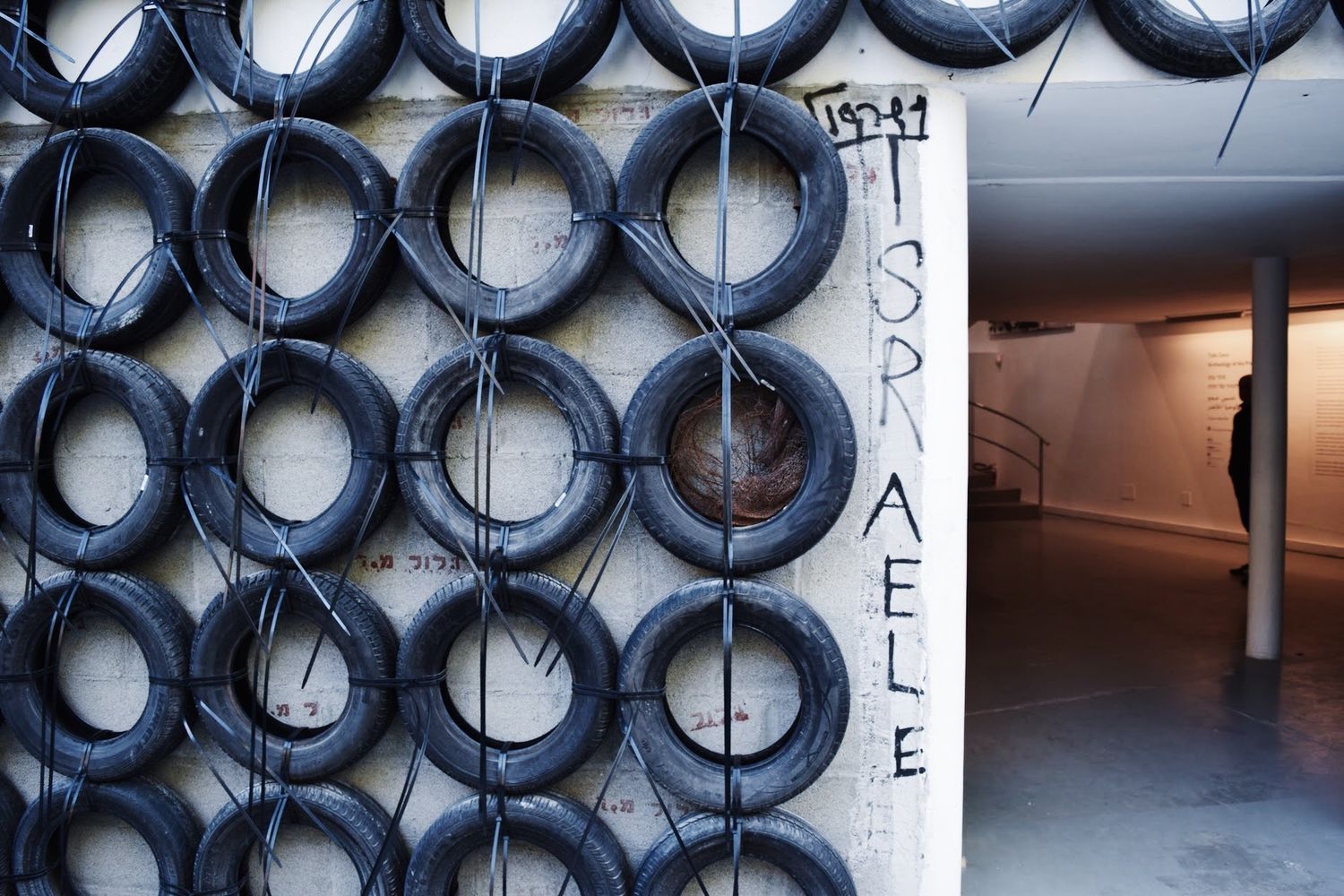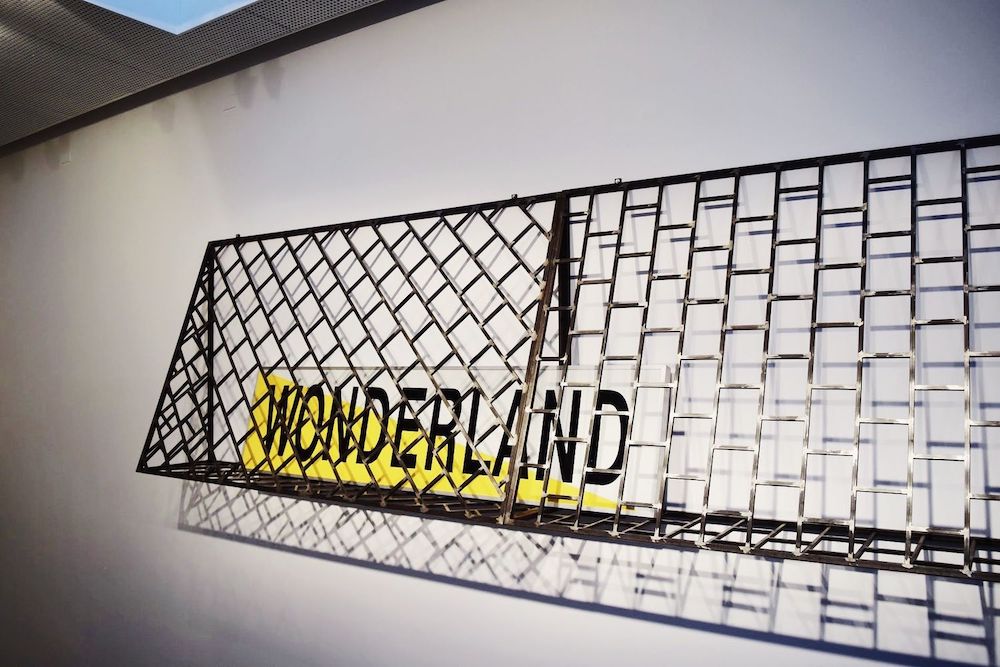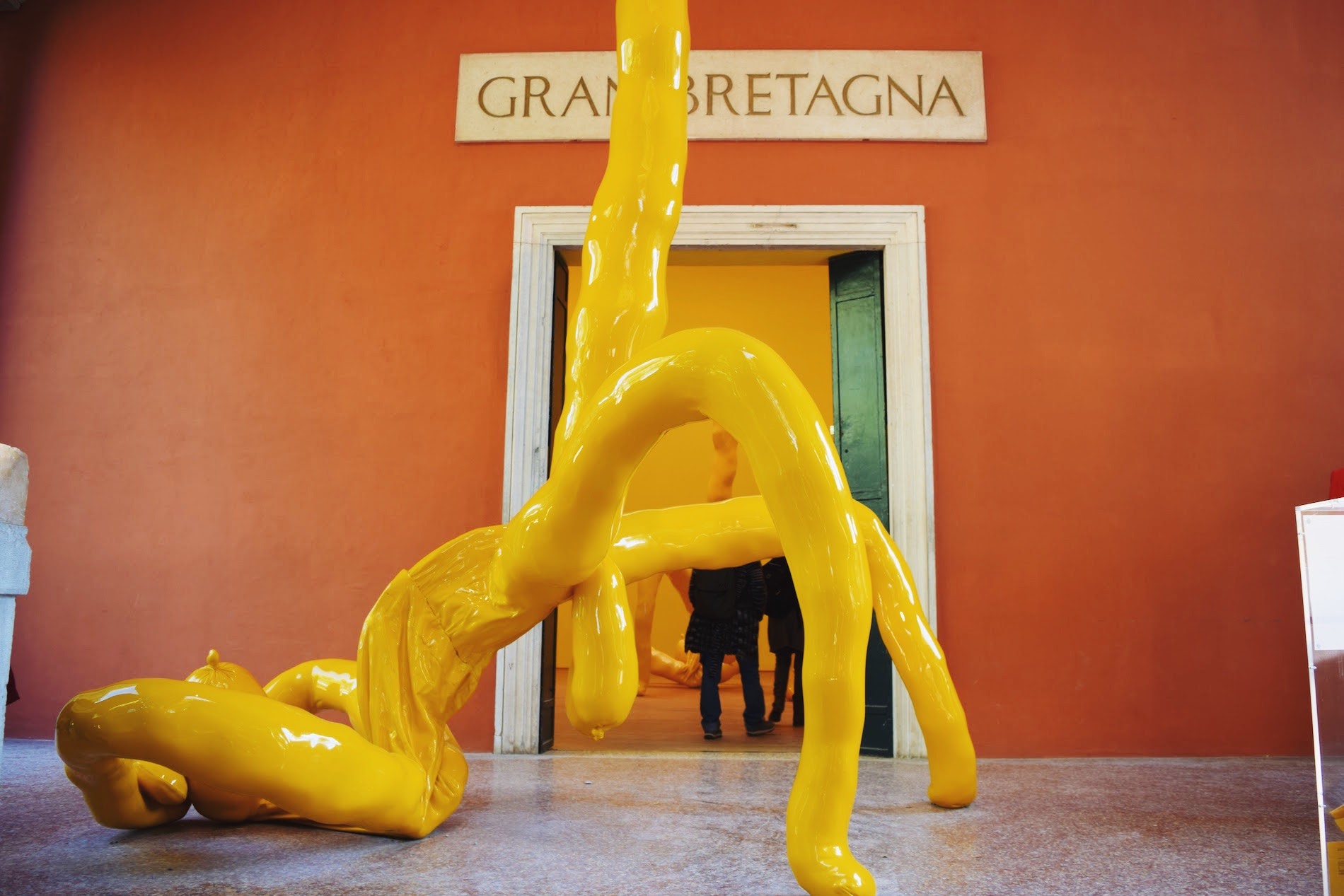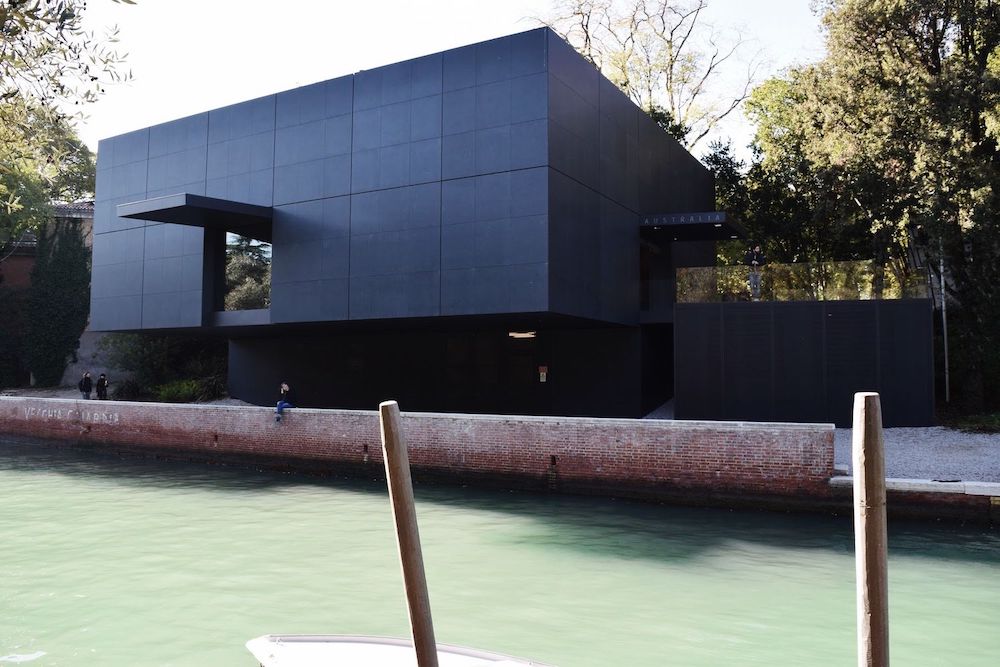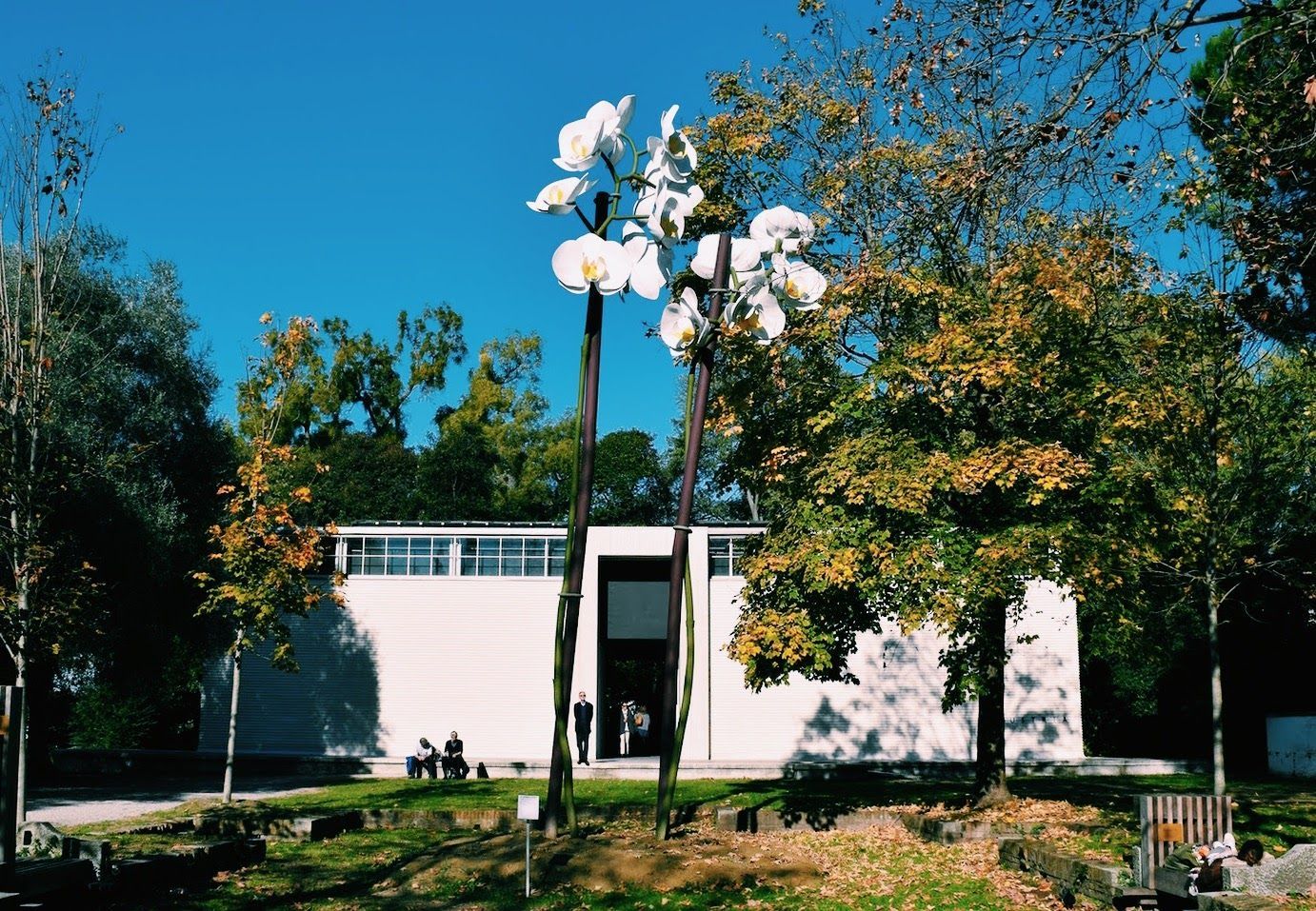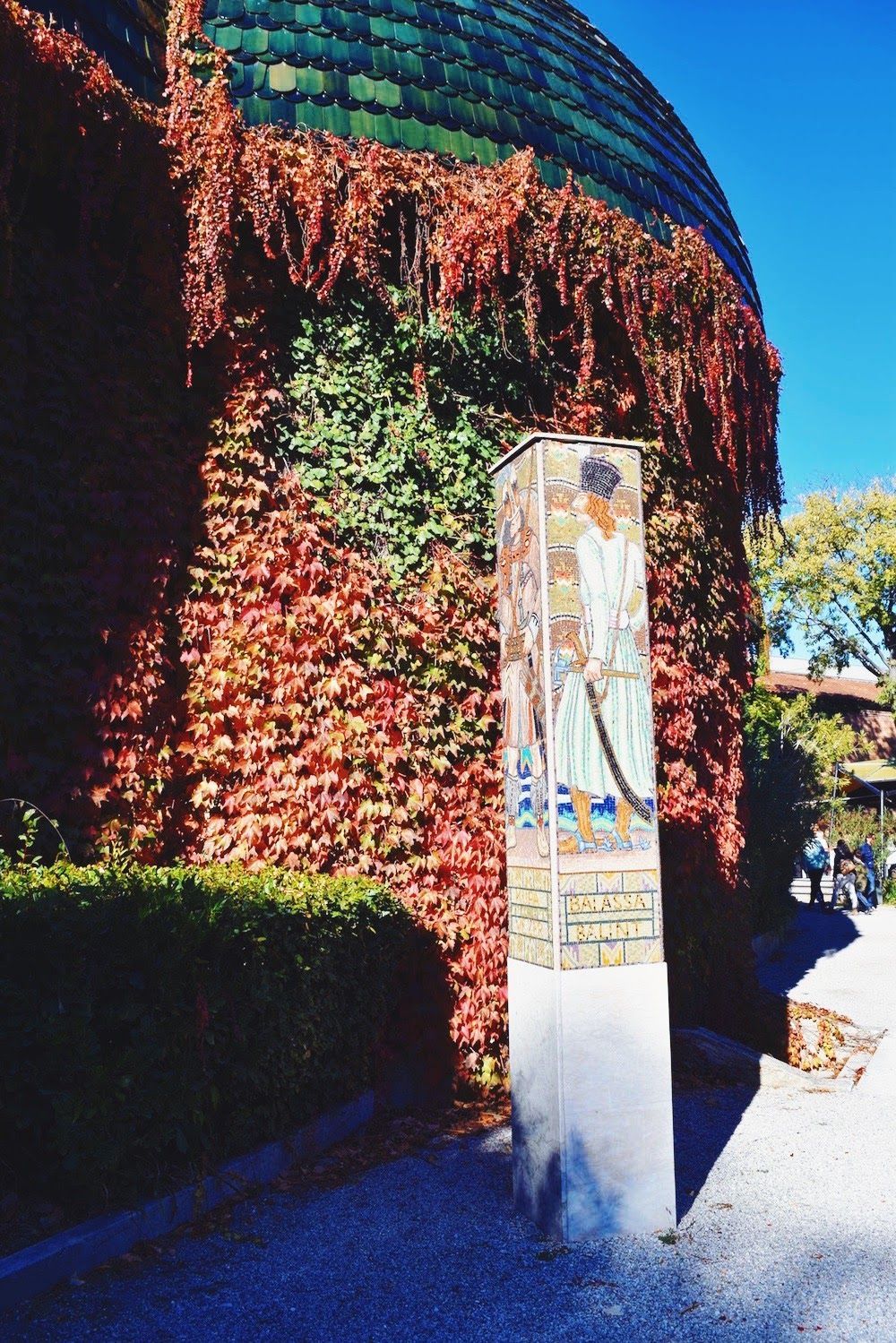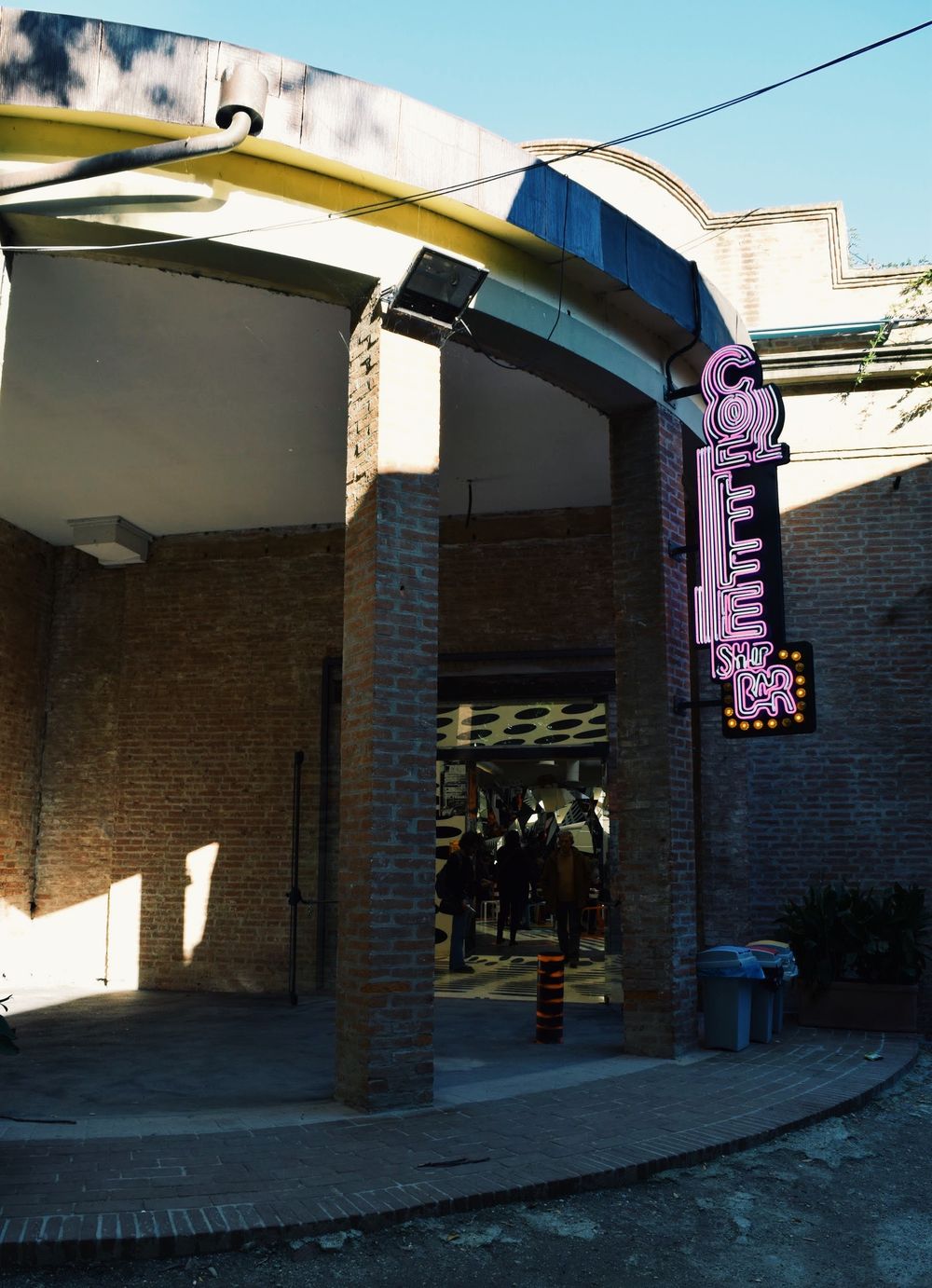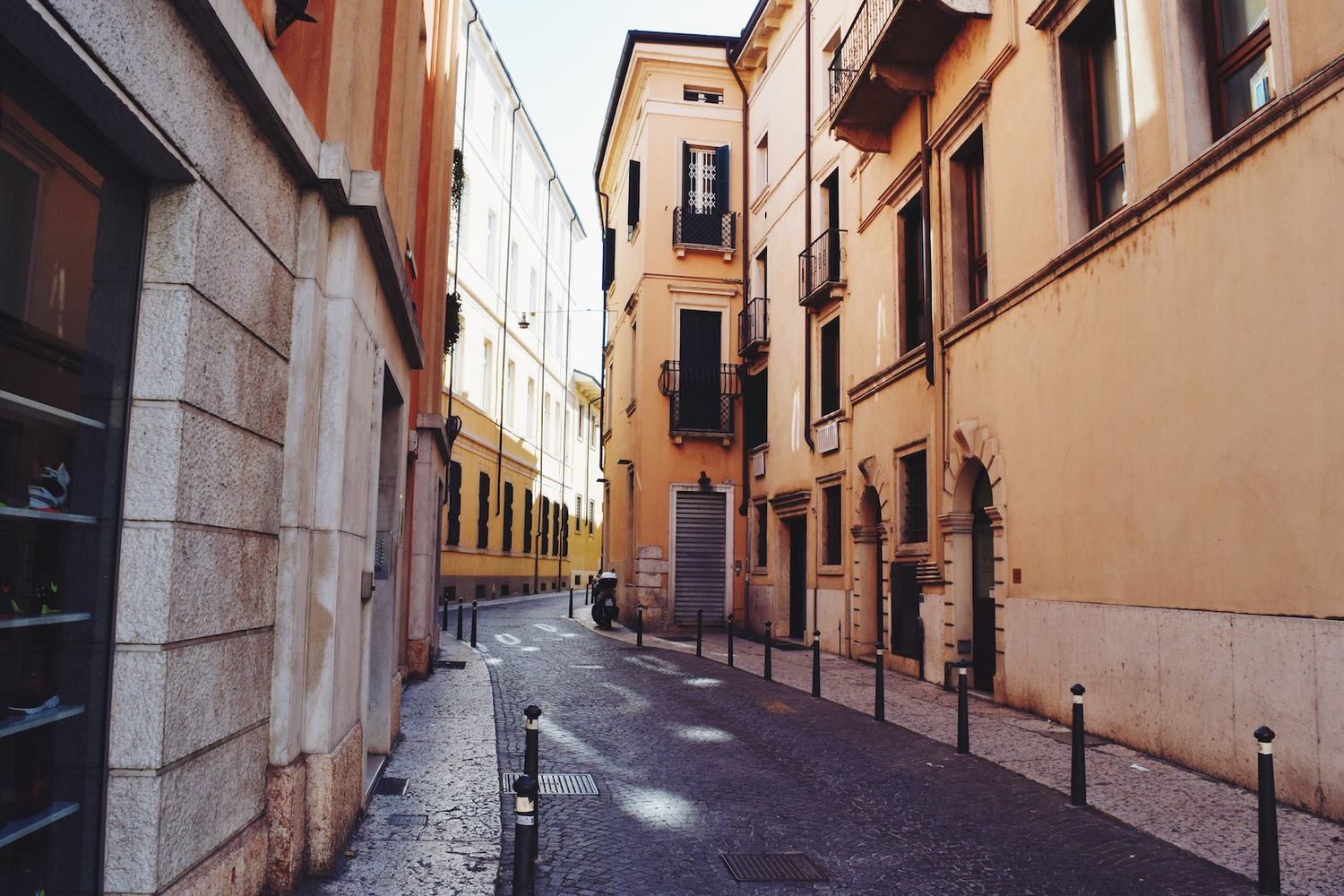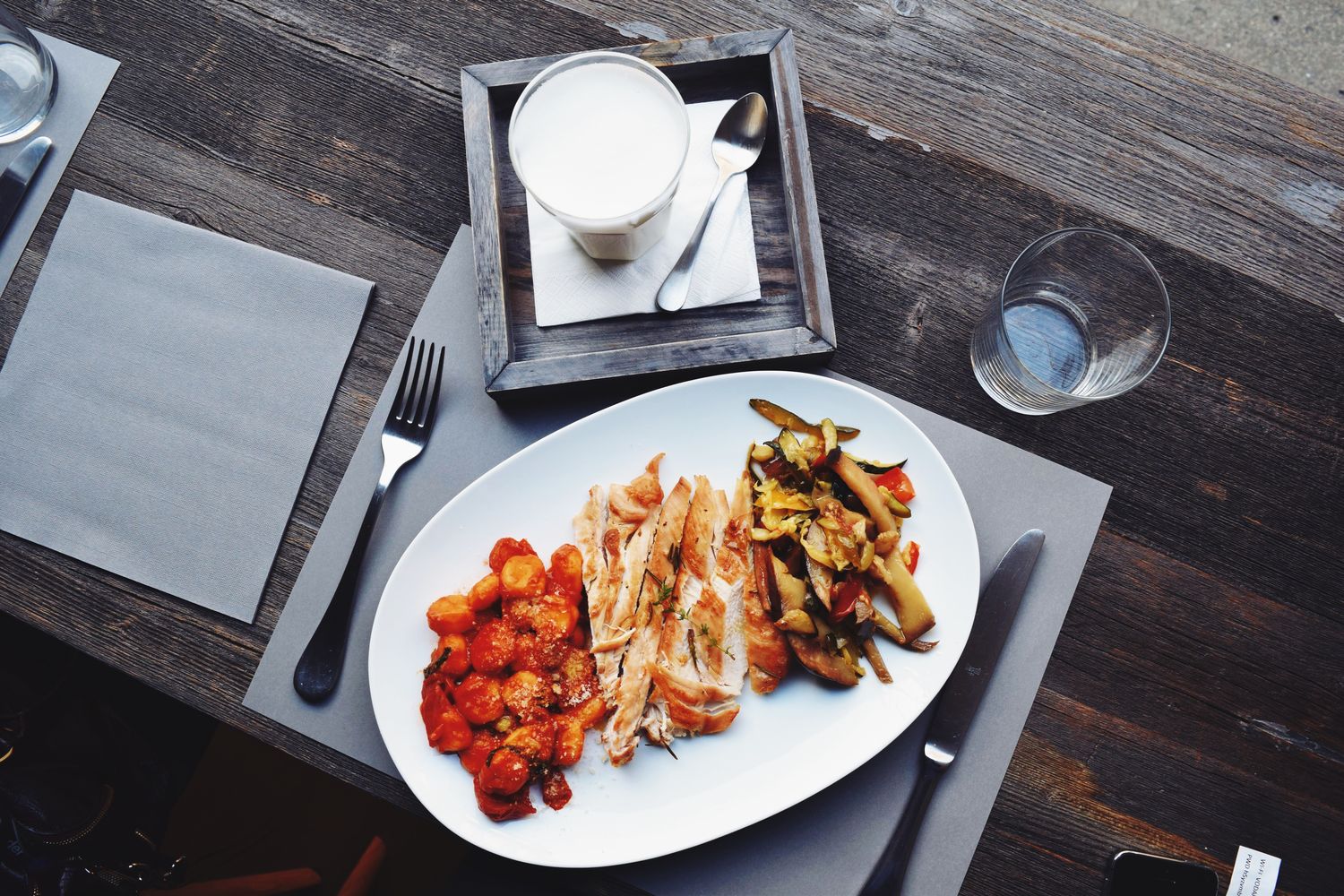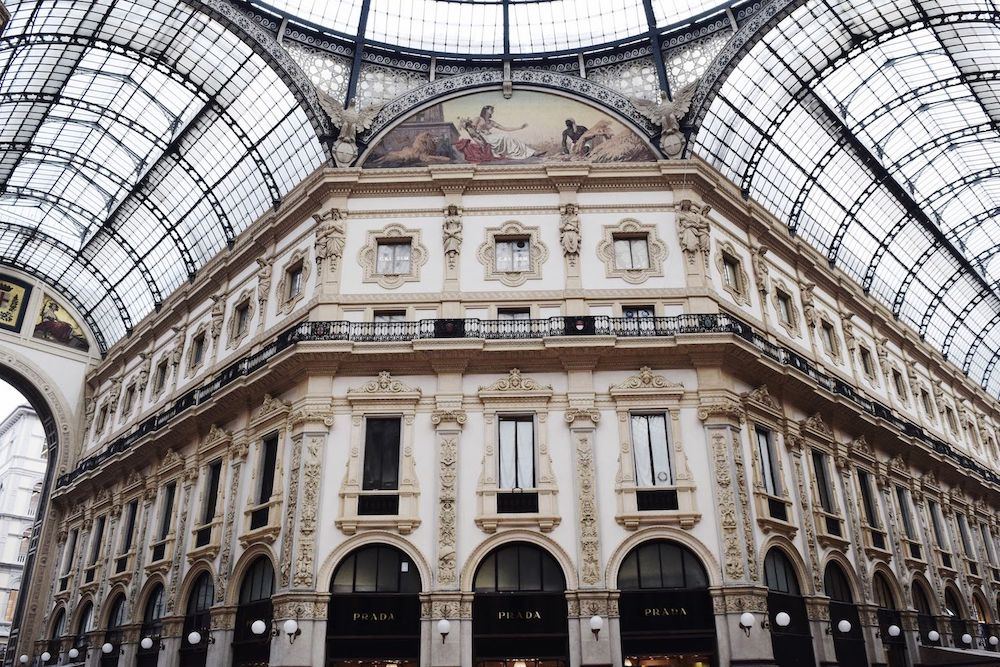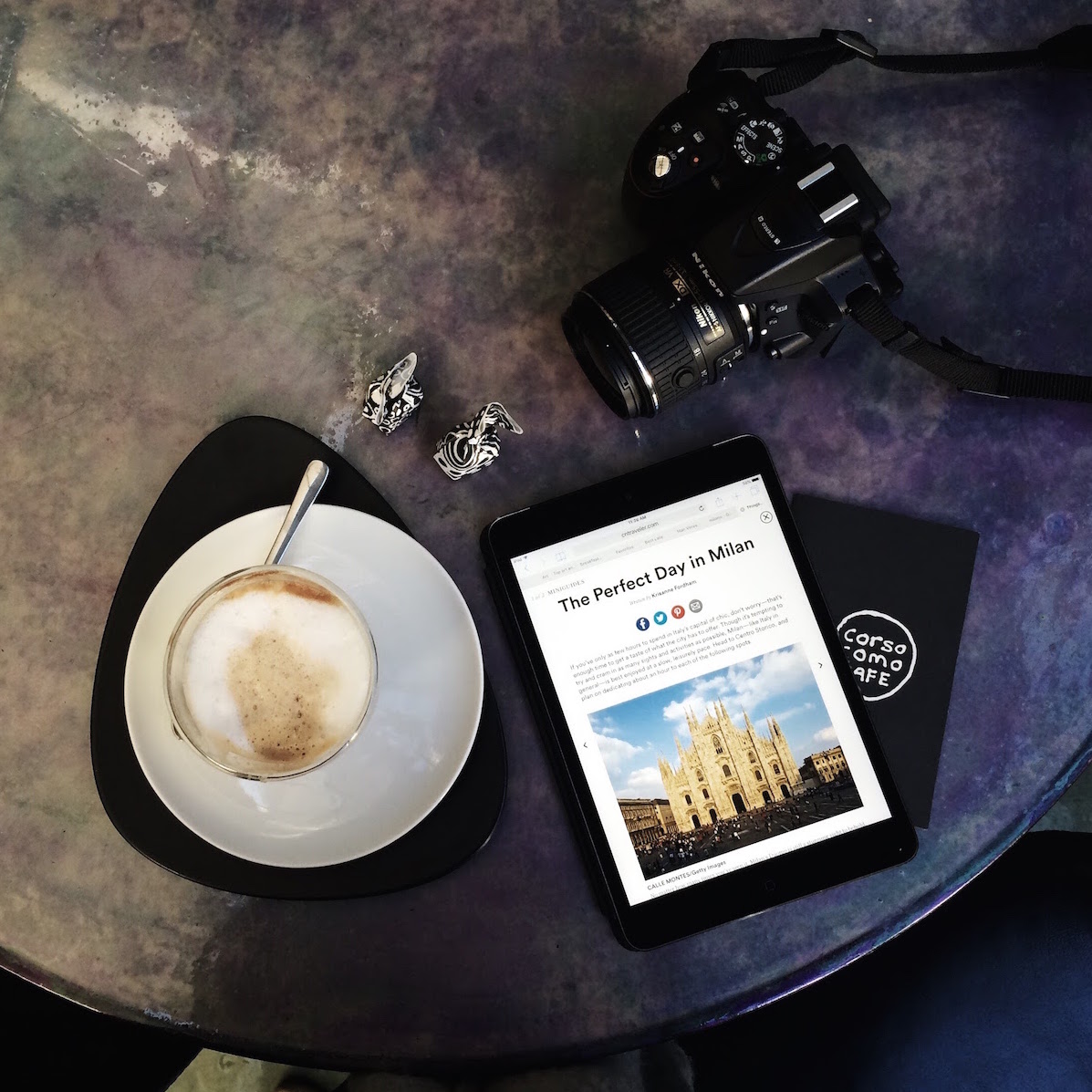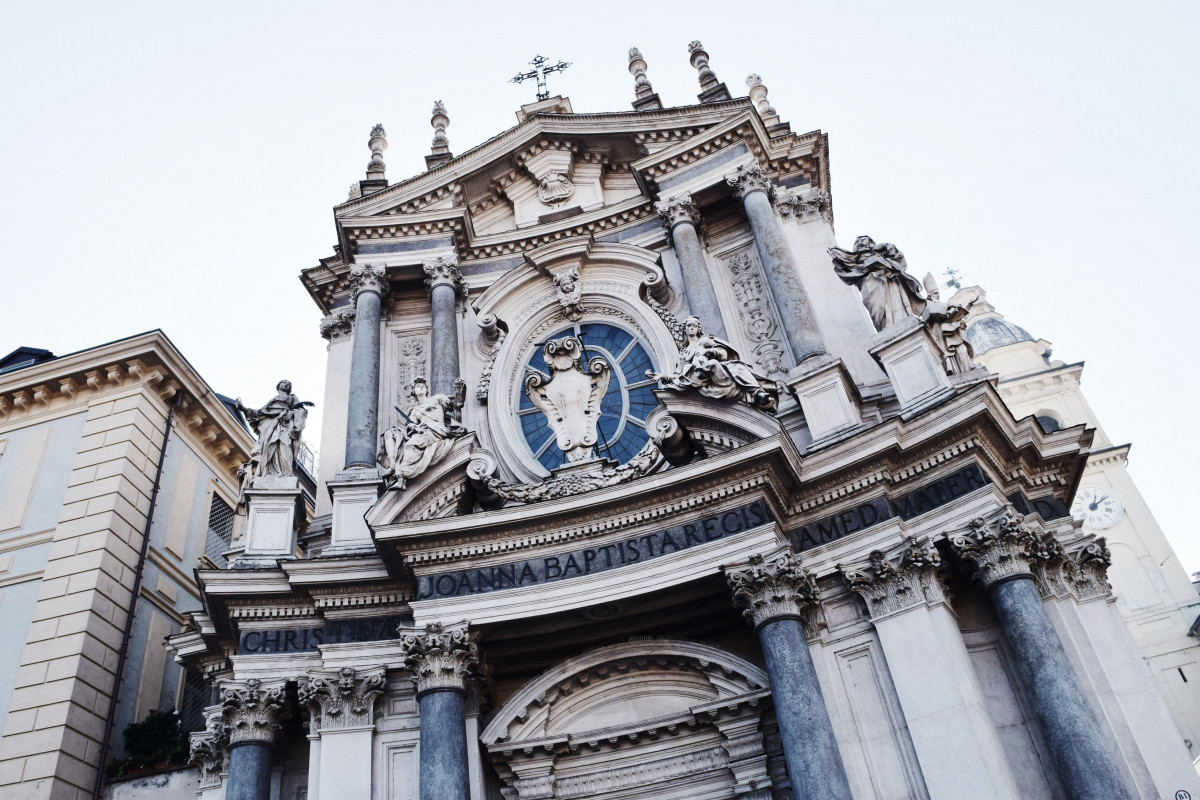The Venice Biennale
Culture Travel may earn a commission through links on this website. As an Amazon Associate, we earn from qualifying purchases.
Attending the Venice Biennale was something I’d wanted to do for quite some time. It’s arguably the most important exhibition of contemporary art in the world and features work from numerous countries around the world, who send their best artist to install a show and represent the country. Each country is given its own “pavilion” which is basically just a small building that the country was responsible for designing and decorating.
Visiting the Biennale was the primary focus of my visit to Venice on Sunday. I arrived mid-day and the line was not very long at all. I paid 15 euros for my ticket (with a student discount), grabbed a guide, and began my tour. Of course, with only one day I couldn’t see everything, but I was able to explore a good amount of the Giardini section!
Russian Pavilion
“The Green Pavilion” by Irina Nakhova
Visitors to Russia’s pavilion were greed by a visually stunning video and sculptural installation. The first room displayed a huge gas mask with a tube leading into the wall. The eyes were screens displaying a video of the eyeballs looking around the room, which was lit by a skylight in the ceiling. The work had a claustrophobic and generally anxious feeling to it.
German Pavilion
“Factory of the Sun” by Hito Steyerl
Germany’s Pavilion was probably my favorite space at the Biennale this year. In one section, you walk downstairs into a pitch black room lit only by bright blue grid lines glowing along the floor, walls and ceiling. A projection screen is placed in one corner of the room, and lounge chairs surround it. Normally I am not a fan of video work but this one was particularly engaging.
At first the video played a newscast where a man was being interviewed. The top right of the screen said “I can tell you whatever I want” likely implying that newscasts are generally not reliable. At the bottom, the presenter’s subject was “Portugal? Greece? Who?” and subtitled “Bank denies everything whatsoever” referring to the financial crises around the world. The satirical video is a sharp criticism on the financial markets and the way the blame is constantly shifted from one party to another.
Then the video moved to show various interviews with people who had died during civil wars or national revolutions. For example, one voice came on and introduced themselves and then said something like “I died during the Arab Spring movement” or “I was shot down during the Tiananmen Square protests” and then shared the story of their death during this time of social strife. Footage was projected showing the uprising that the narrator referred to, but I’m unsure if this was actual footage or staged. In either case, it was particularly jolting. “ORPHANS OF THE ENEMY” was displayed one point with fantastical people jumping around in gold jumpsuits like they were a group of superheroes.
Swiss Pavilion
“Our Product” by Pamela Rosenkranz
Walking into Switzerland’s pavilion is deceptively uninteresting. The first part features a soft green light, but if you walk a little further into the exhibition, you’ll see a hallway leading to a room. You can’t actually enter the room because it’s filled with pink water. A wall that reaches the viewer’s chest (depending on your height) separates us from the water, which is filled to the very top edge, even gently spilling over. The water is actually the same hue of the average northern European skin tone. What color means to the artist was an important theme in this exhibition, curated by Susanne Pfeffer.
Japanese Pavilion
“The Key in the Hand” by Chiharu Shiota
A sea of red yarn engulfed the ceiling of Japan’s Pavilion. Tied to these endless strings were thousands of brown keys. In a surreal scene, some of the wooden boats placed on the floor were tilted upwards, as if they were about to be led into the sea of yarn above.
Nordic Pavilion
“Rapture” by Camille Norment
You’d think there was an act of vandalism at the Nordic Pavilion when viewing Camille Norment’s over sized broken windows for “Rapture” this year. Fragmented glass covered the pavilion floors and solid white frames lined the damage. The minimalist work was striking in appearance, and also spoke to the auditory senses with a sound installation in the walled corner of the space. The pavilion was solely represented by Norway for the very first time.
French Pavilion
“Rêvolutions” by Céleste Boursier-Mougenot
It’s an incredible sight to see the most earthly, natural form – a tree – placed inside a perfectly white man-made pavilion. Céleste Boursier-Mougenot brought the roots and foundation of several beautiful trees to the French Pavilion in this year’s Biennale. Not only did she bring the trees, but she allowed them to move. Yes, in front of the pavilion, visitors could see the trees gently moving against the dirt of the park grounds.
Belgian Pavilion
Personne et les autres: Vincent Meessen and guests
Belgium’s Pavilion was managed a little differently this year. Artist Vincent Meessen chose to include several artists’ work inside the space, as a way to acknowledge the diversity in Belgium. His decision works to defy nationalism by sharing multiple perspectives. He worked with curator Katerina Gregos to feature ten other artists from around the world.
Elisabetta Benassi, Mfumu, 2015:
Work by Adam Pendleton:
Dutch Pavilion
“To Be All Ways to Be” by Herman de Vries
With a background in horticulture and the natural sciences, Dutch artist Herman de Vries turned to nature when creating the works held at the Netherlands’ pavilion. The pictured “Burned III” features blackened natural wood, resting in front of a primitive hand scribble referencing the title of this exhibition.
Canadian Pavilion
“Canadassimo” by BGL
An incredibly cluttered installation greeted visitors to Canada’s pavilion at the Biennale. The first stop was entering a replica convenience store with plenty of junk food for sale. The second room featured endless brightly colored tin cans, with a rainbow of colors dripping down the sides.
US Pavilion
“They Come to Us Without a Word” by Joan Jonas
The United States was represented by artist Joan Jonas, who created a dark maze of video and light installations inside the American Pavilion.
Brazilian Pavilion
Occupations/Discoveries by Antonio Manuel
Brazil’s pavilion featured several obstructions within the space. A maze of walls was installed with giant holes allowing the visitor to peek through. At the end, a hole showed the visitor a pile of materials, with a box catching drops of water leaking from a plastic bag hanging from the ceiling.
Greek Pavilion
“Why look at animals? Agrimiká” by Maria Papadimitriou
For this installation, artist Maria Papadimitriou recreated in stunning accuracy a taxidermy shop from the town of Volos in Greece. The shop sells various animal skins, leather items and taxidermy.
Israeli Pavilion
“Archaeology of the Present” by Tsibi Geva
Tsibi Geva chose to cover the entire outside wall of the Israeli Pavilion with used tires imported from her country. Inside the pavilion, I found a wonderfully metaphorical work that said “WONDERLAND” behind a chained box.
UK Pavilion
“I SCREAM DADDIO” by Sarah Lucas
This was a bizarre exhibition, in all honesty. The artist referenced the human form in sculpture and the work attempted to disgust the viewer with obscene gestures, cigarettes and toilets.
Australian Pavilion
Unfortunately I didn’t get to go inside this pavilion, but the minimal style architecture looked beautiful.
Sculptures at the Central Pavilion
The Central Pavillion features works by artists from around the world.
Isa Genzken, Two Orchids, 2015
The Fair Grounds
I wish I could have seen the entire exhibition, and my hope is to visit the Architecture Biennale next year! :)
